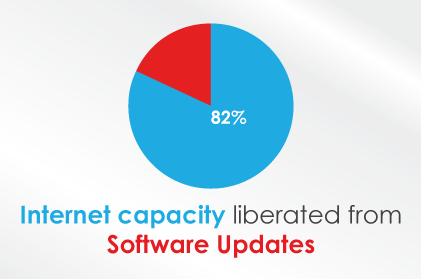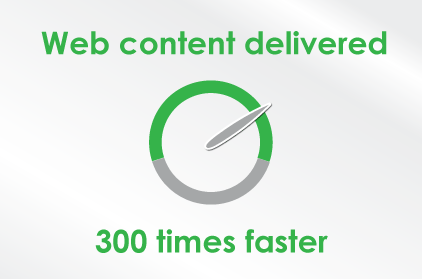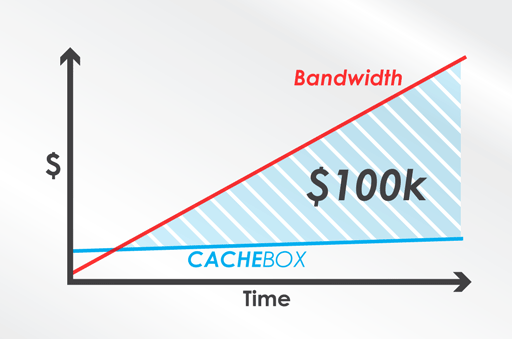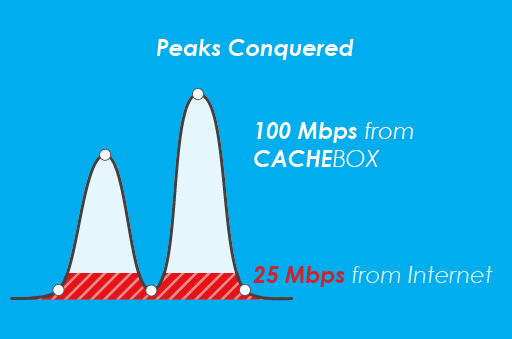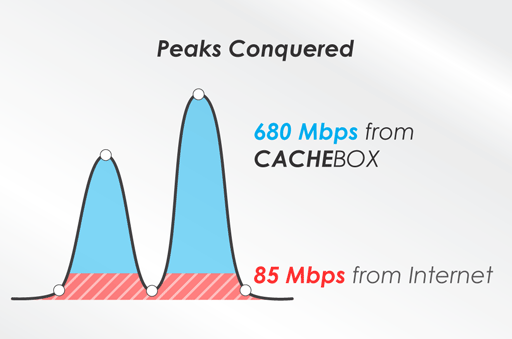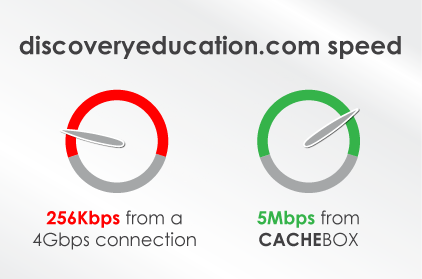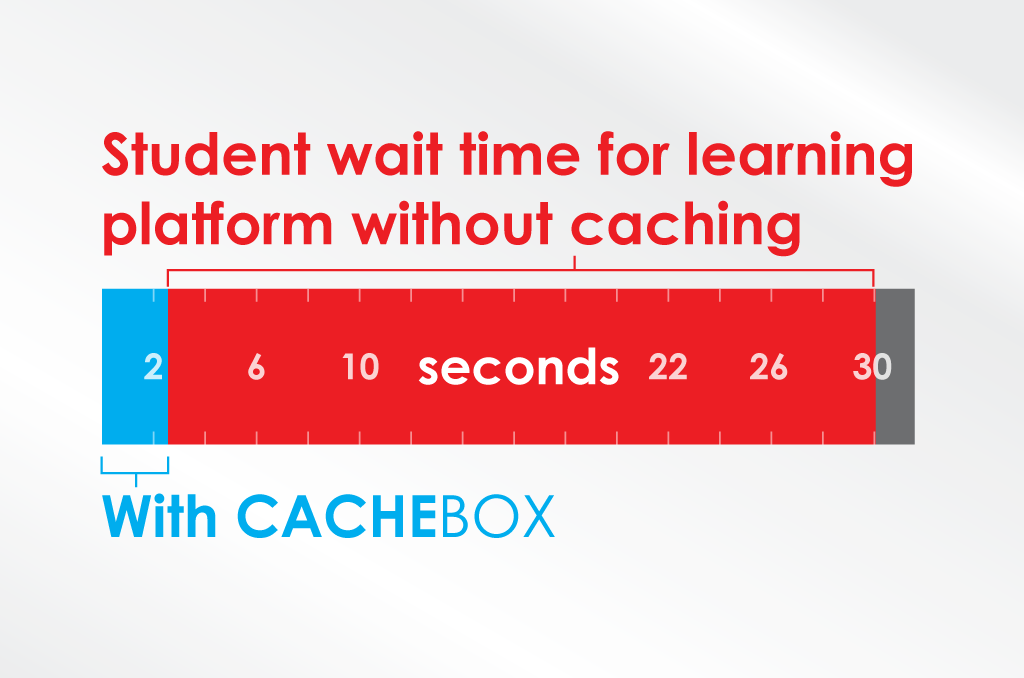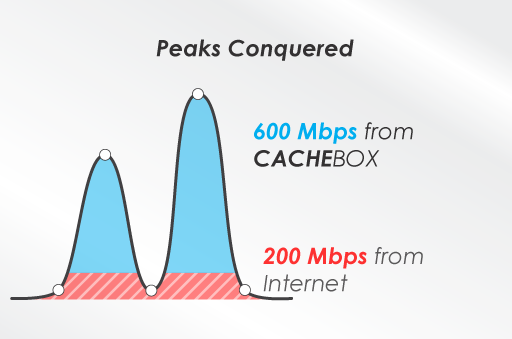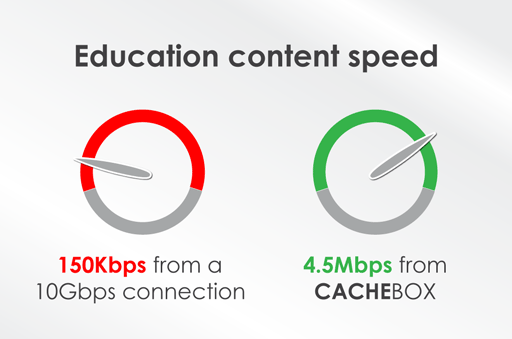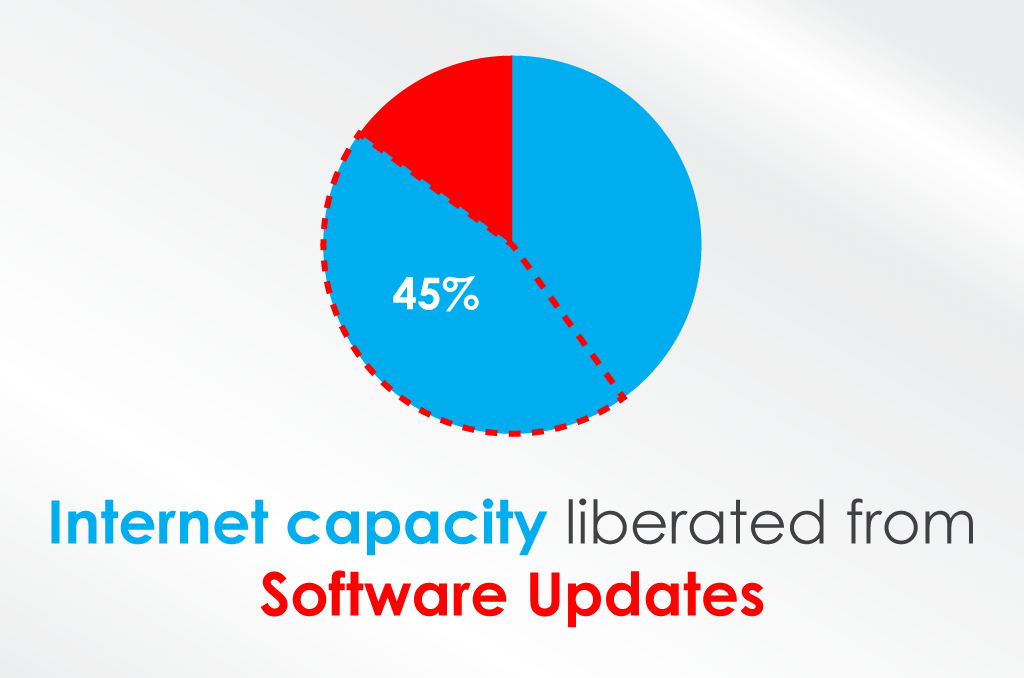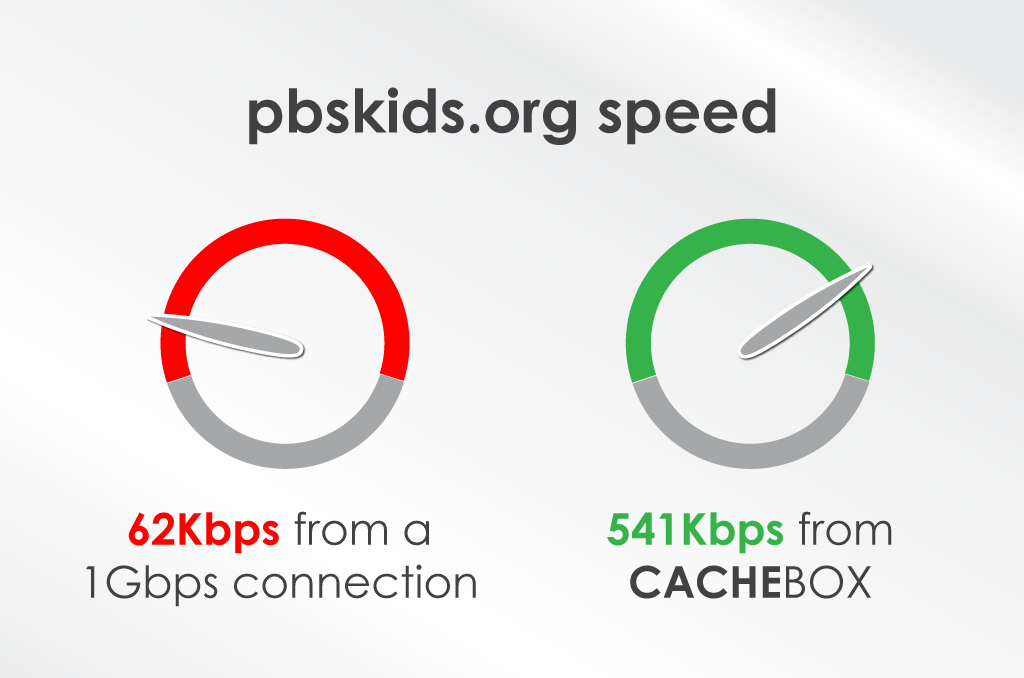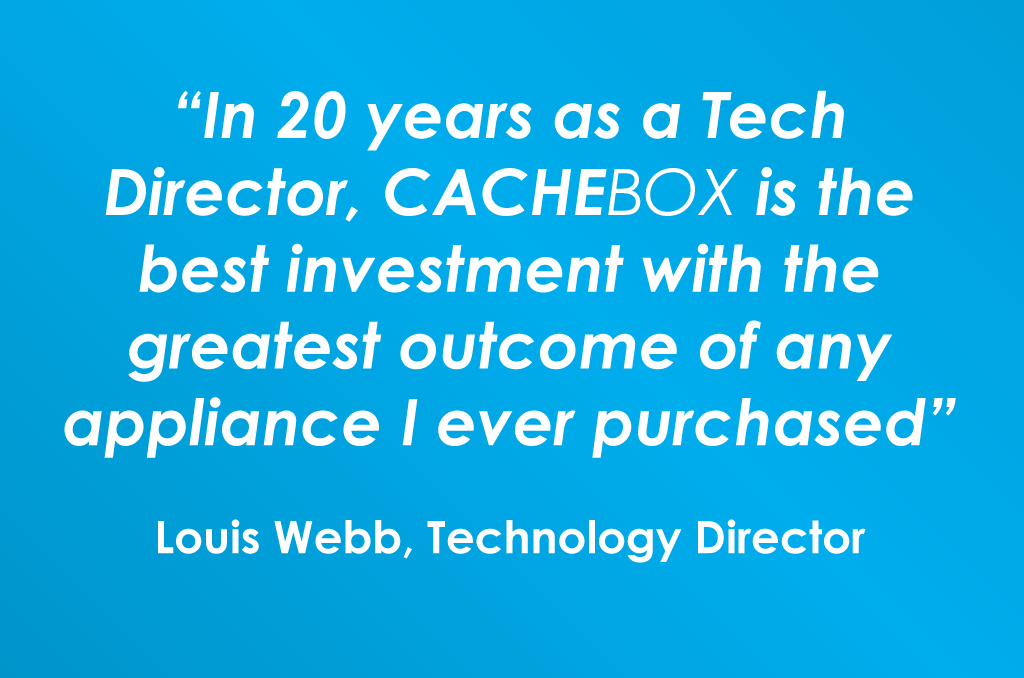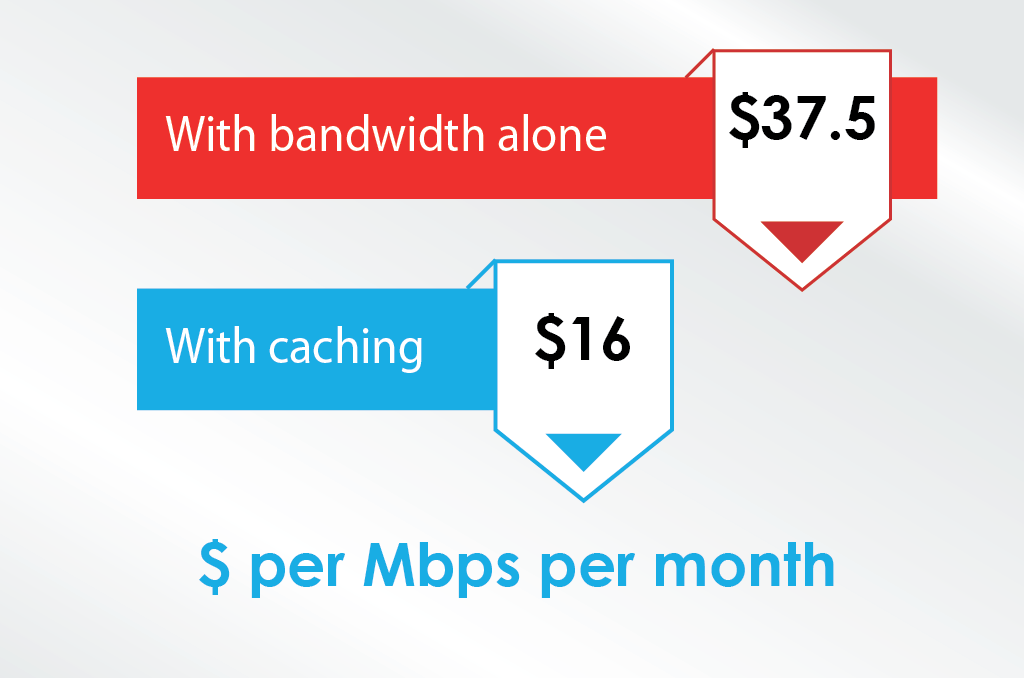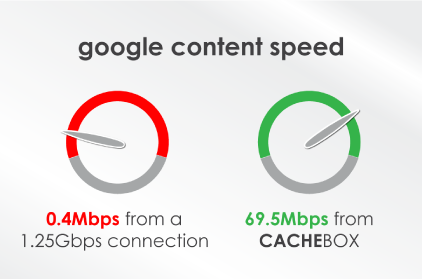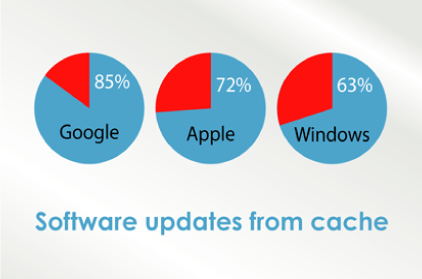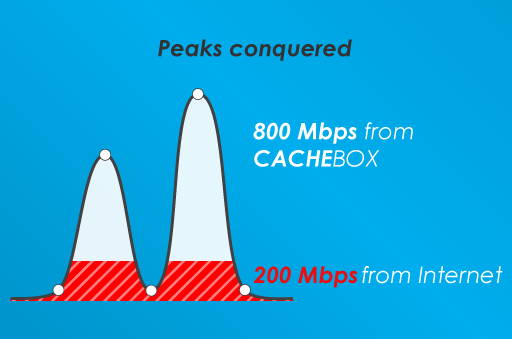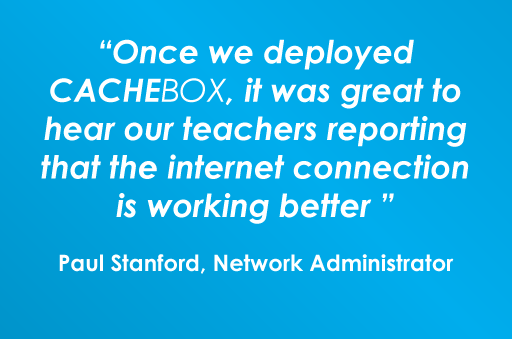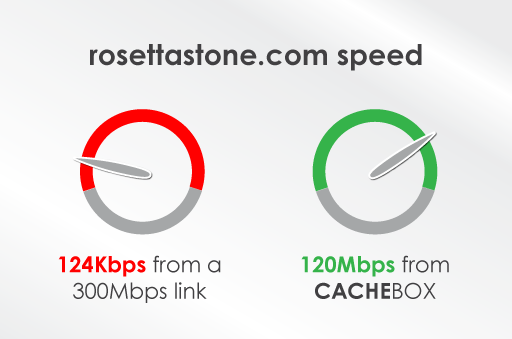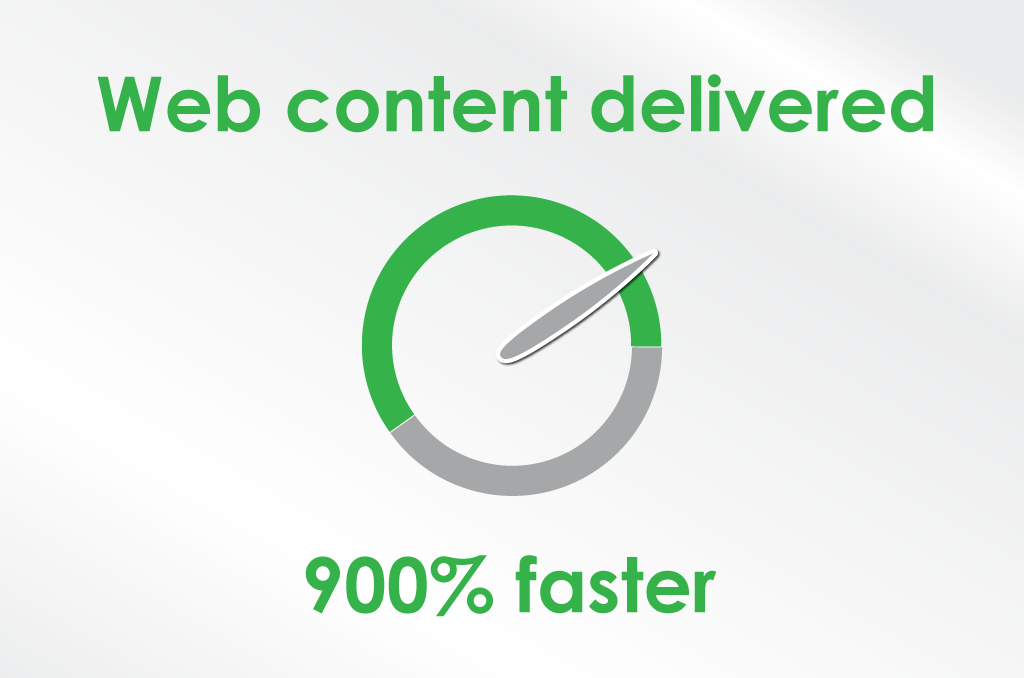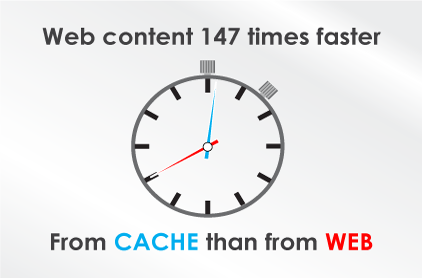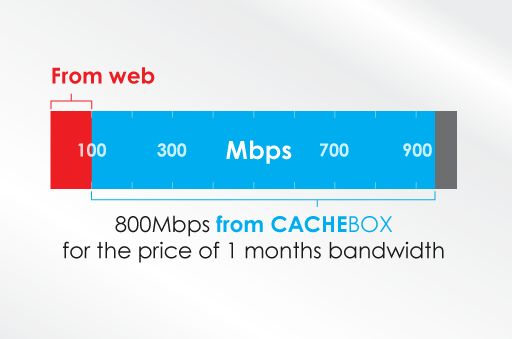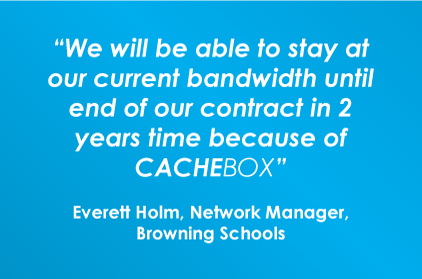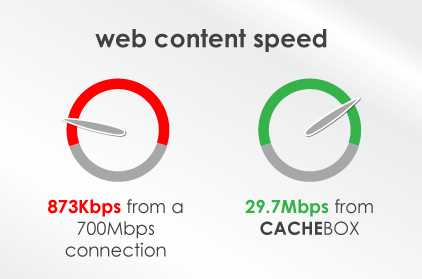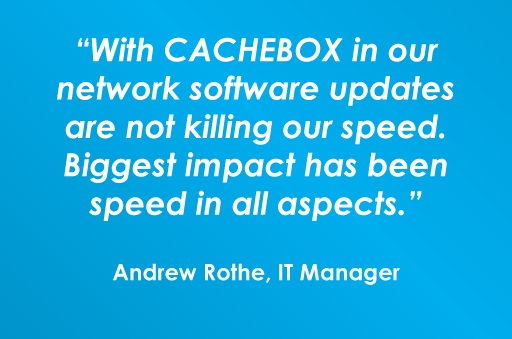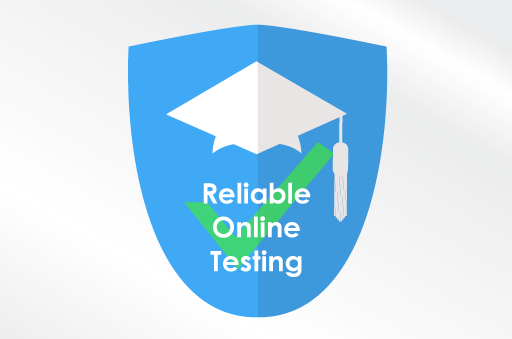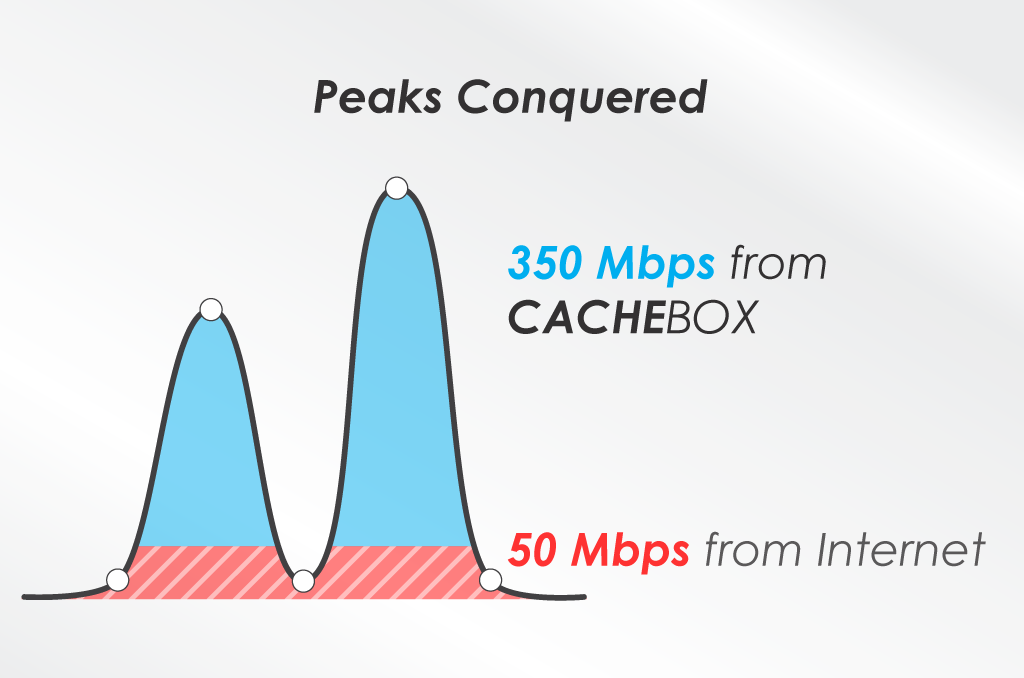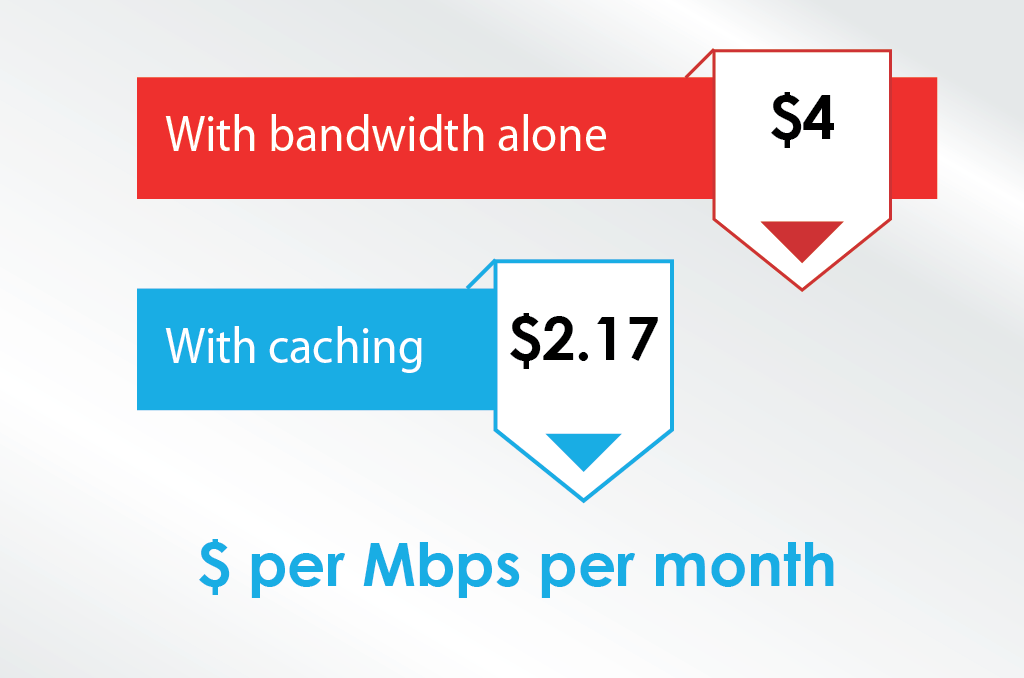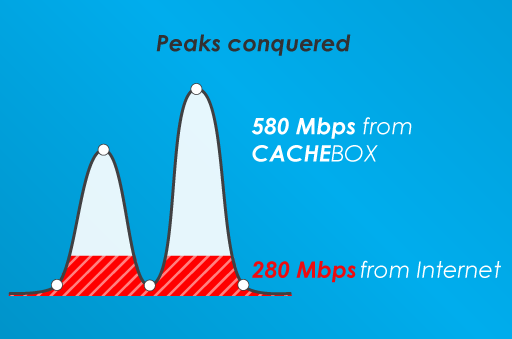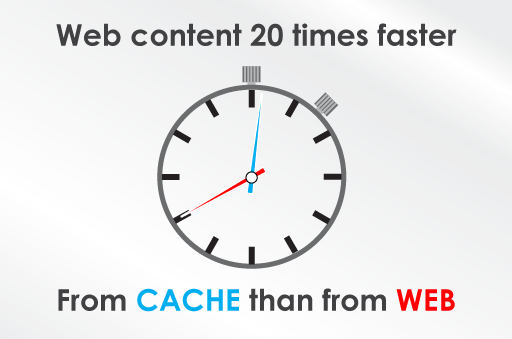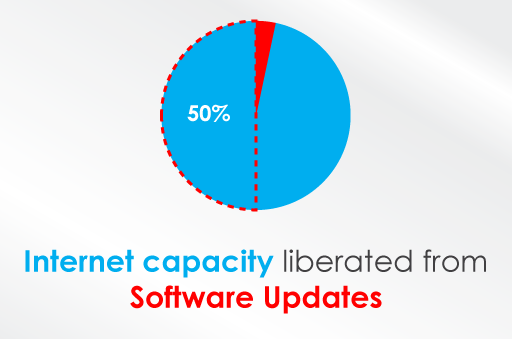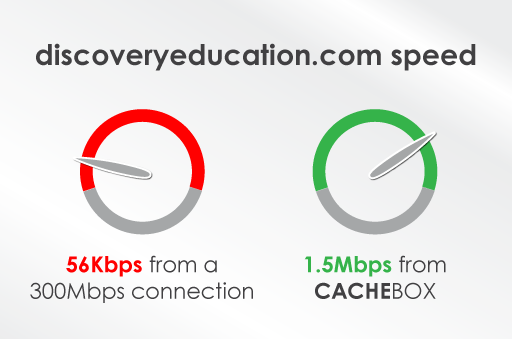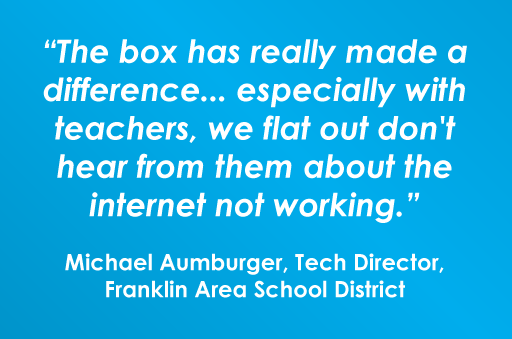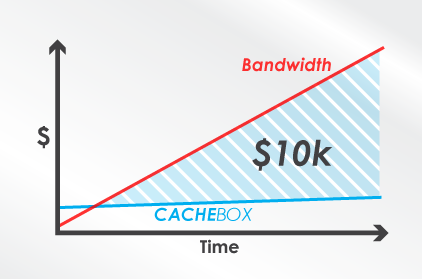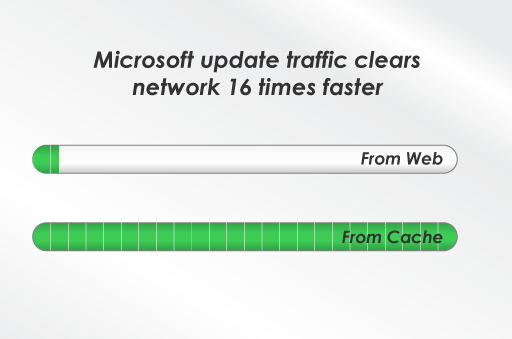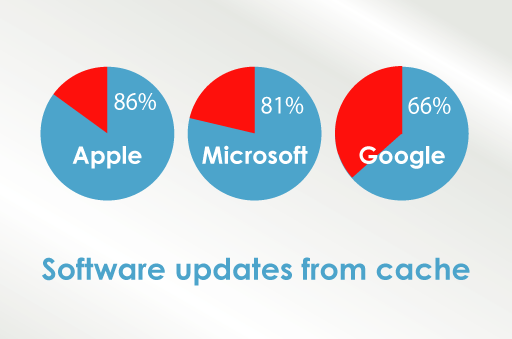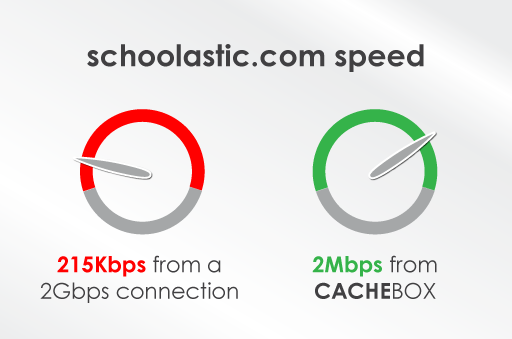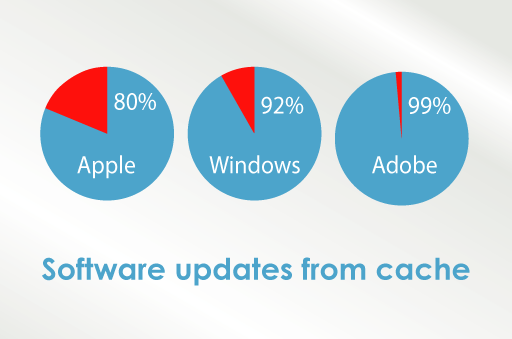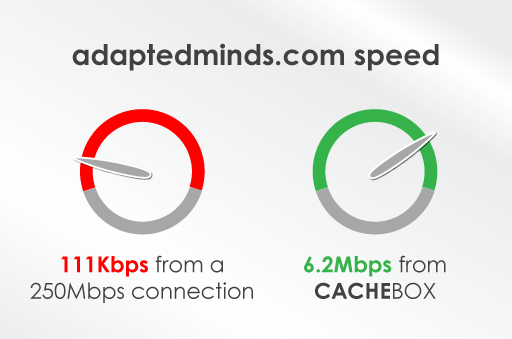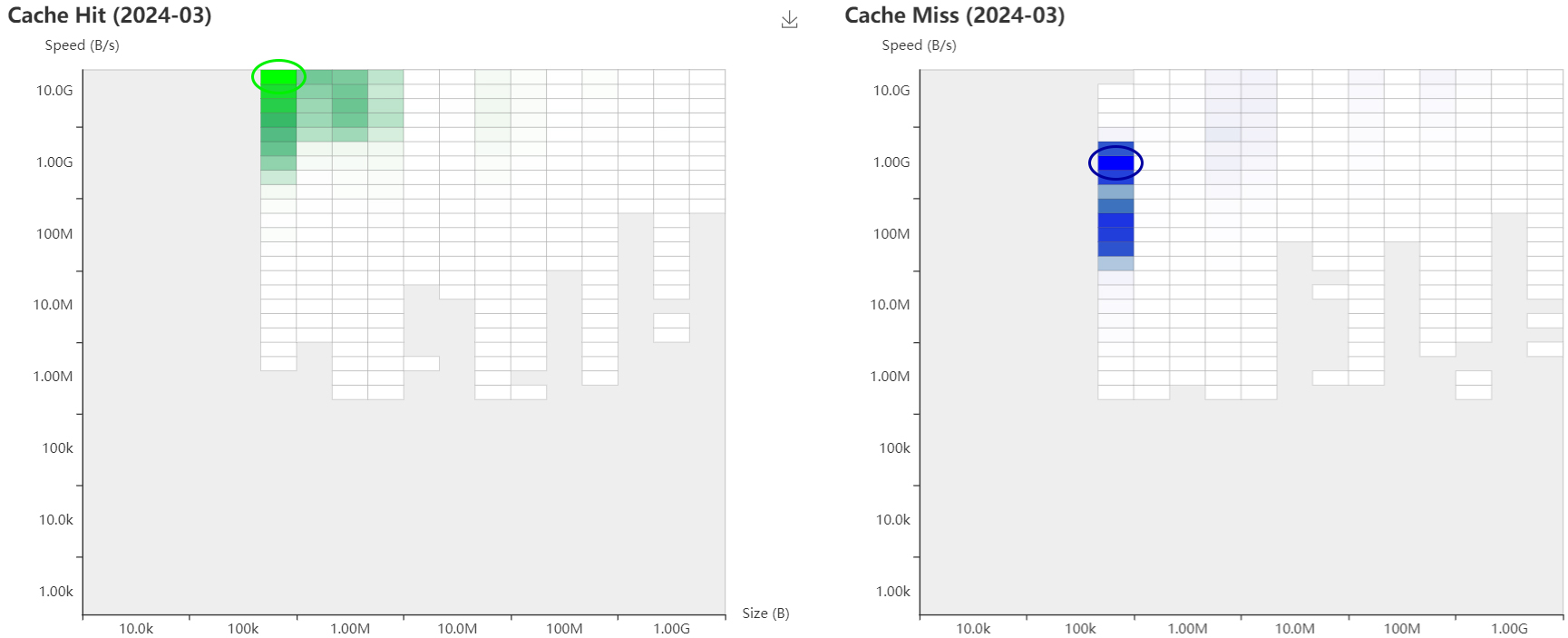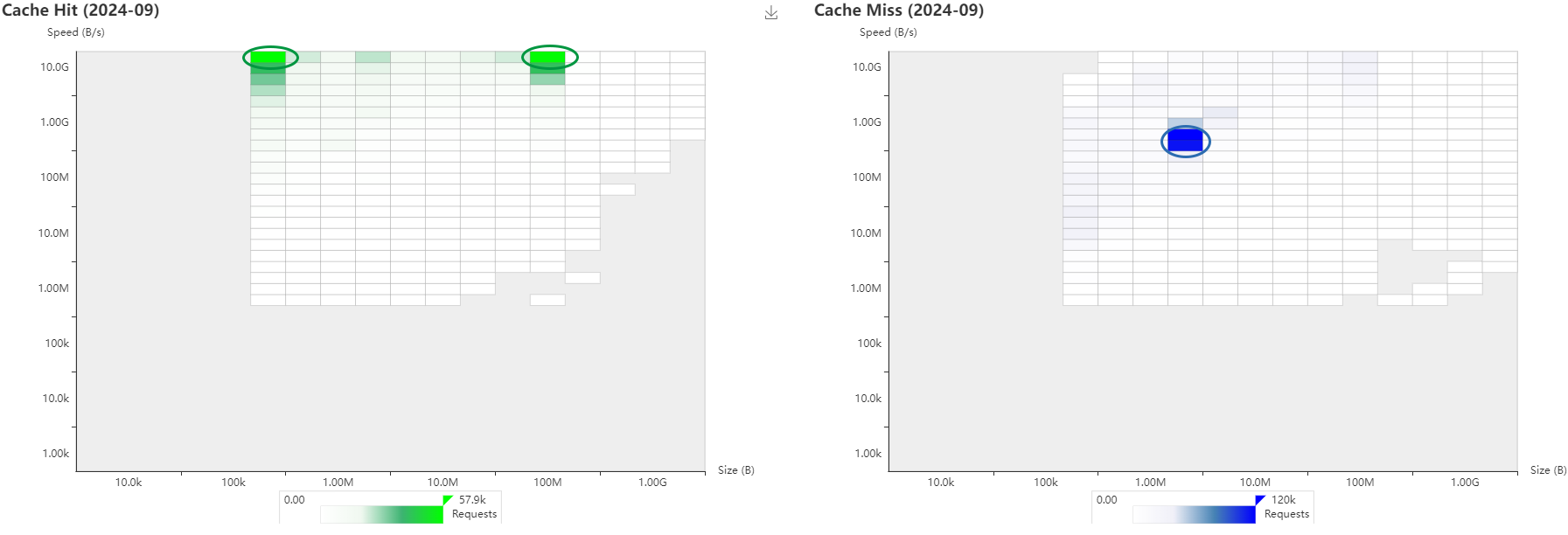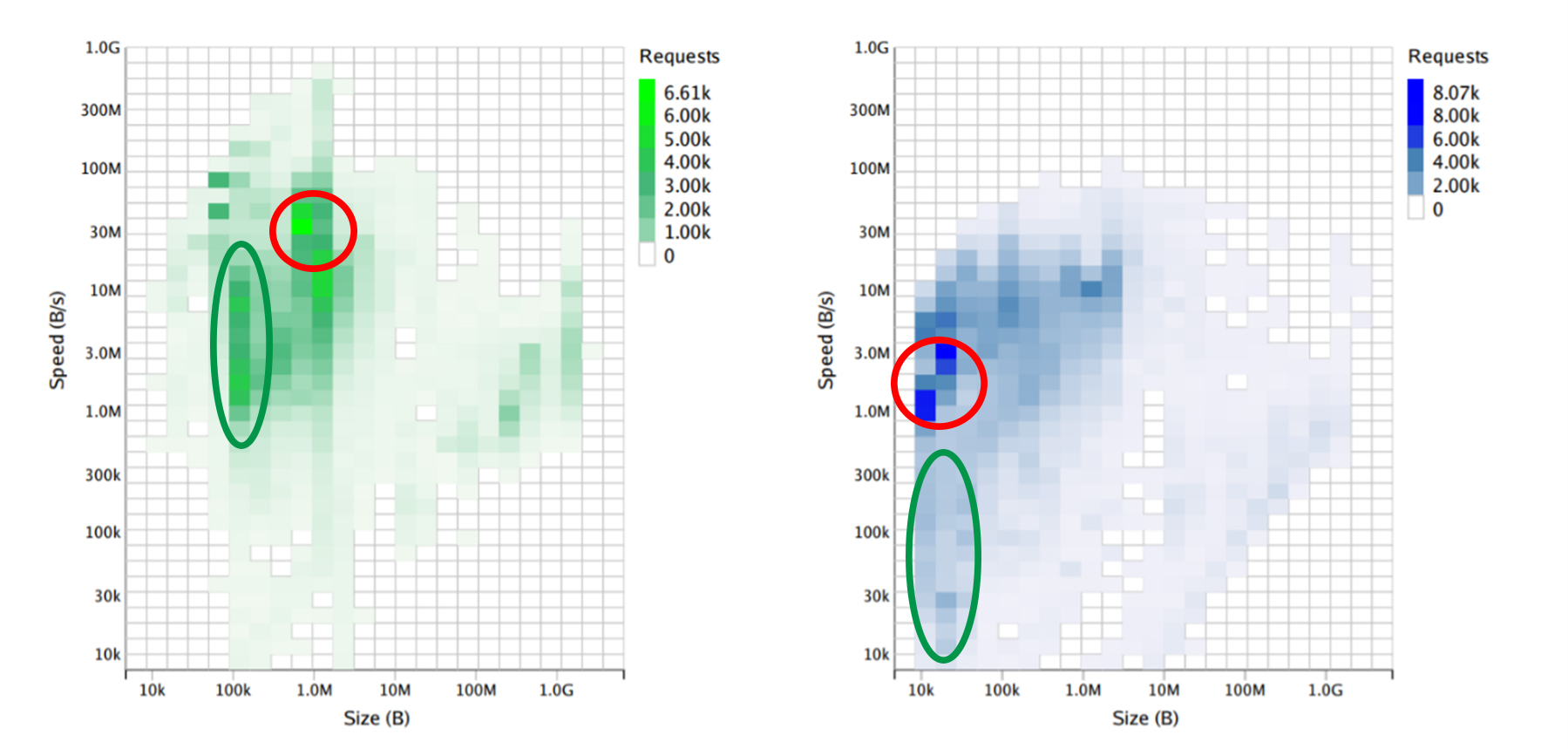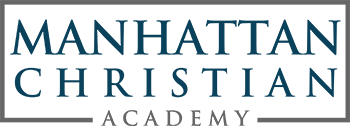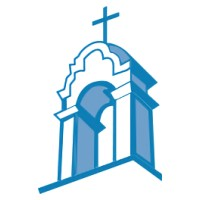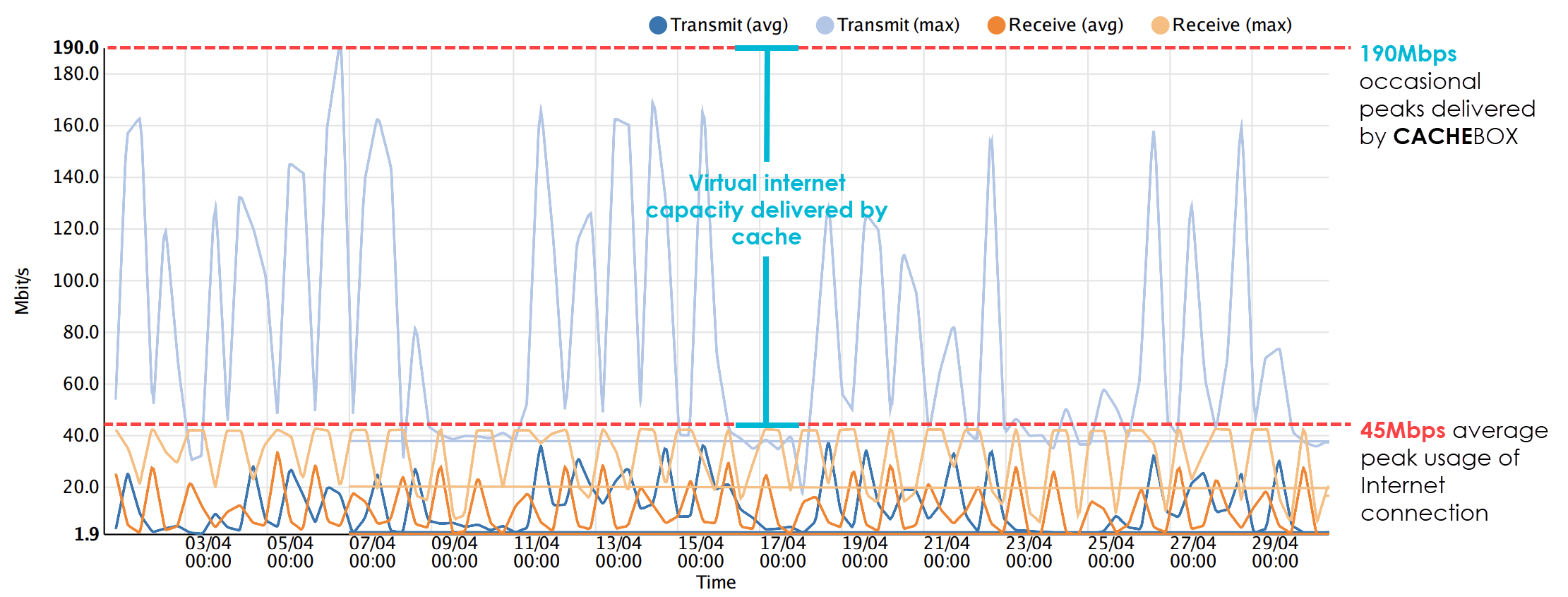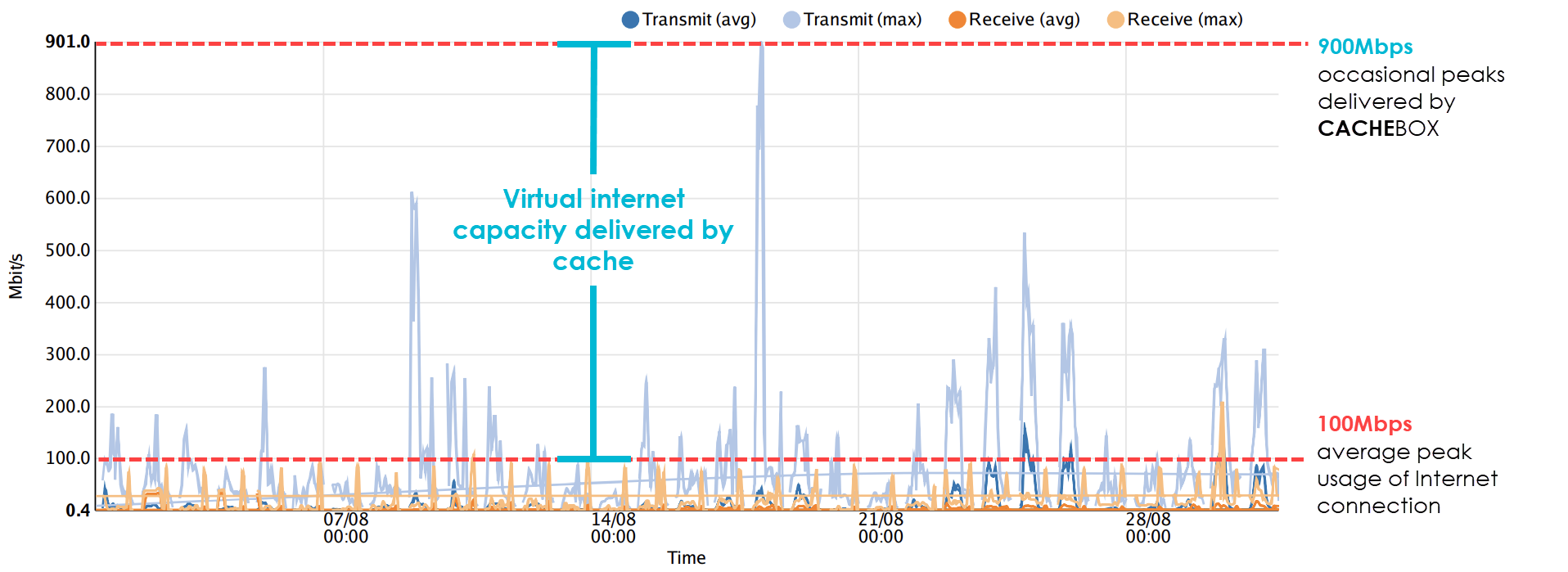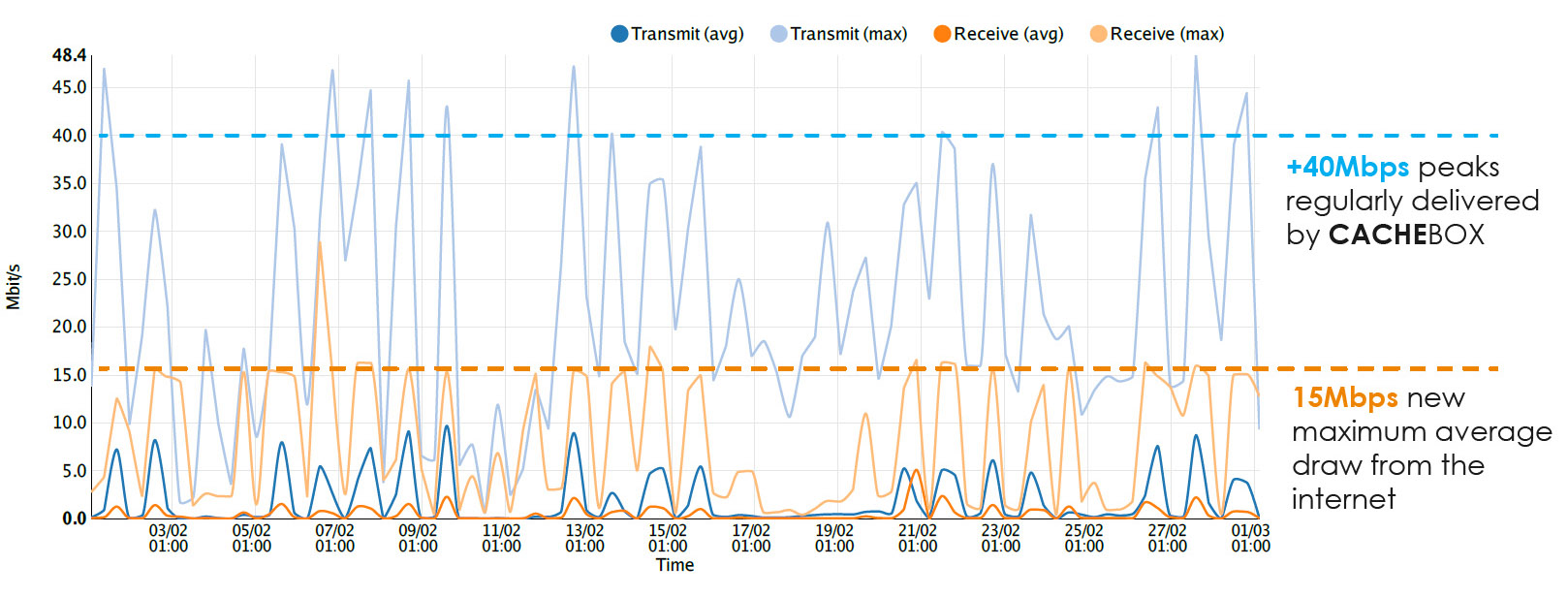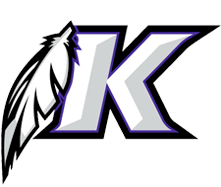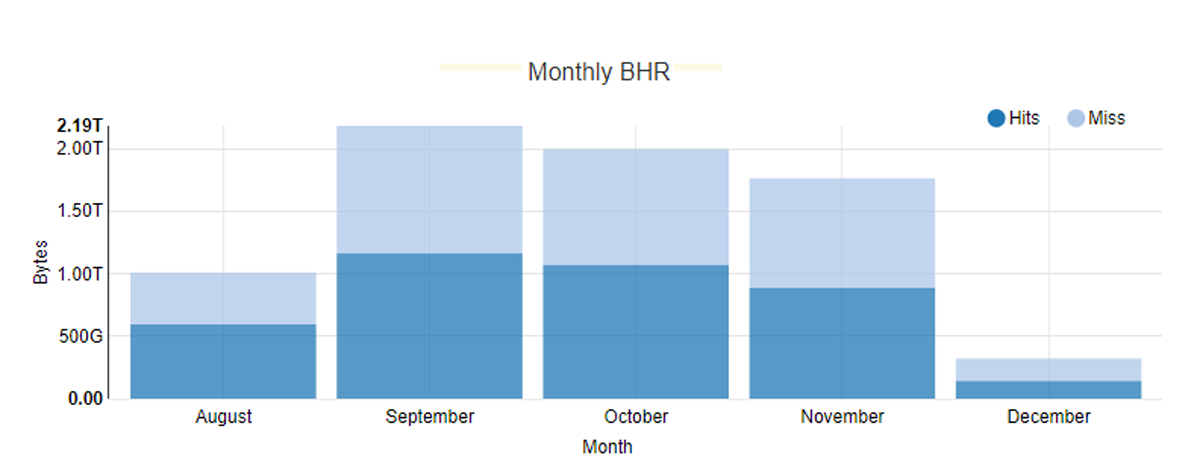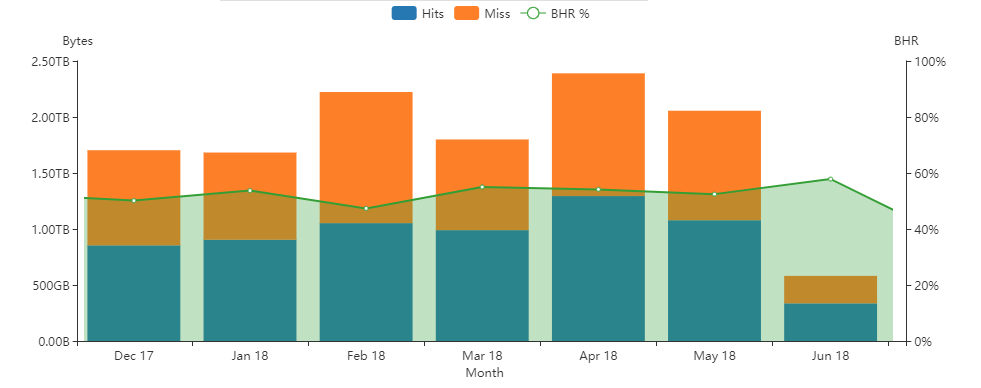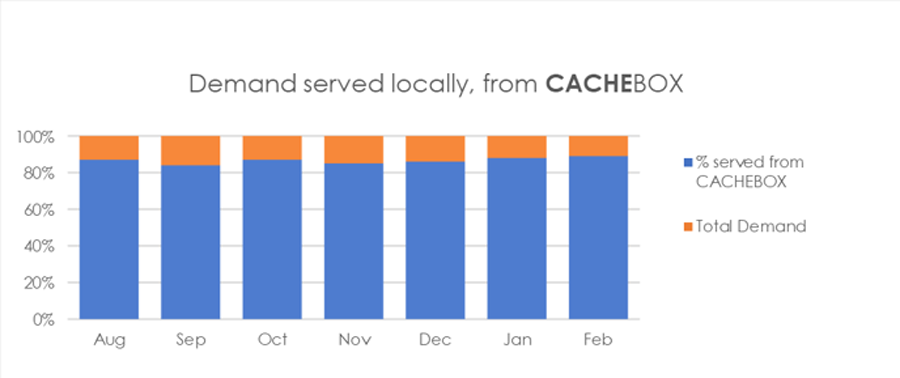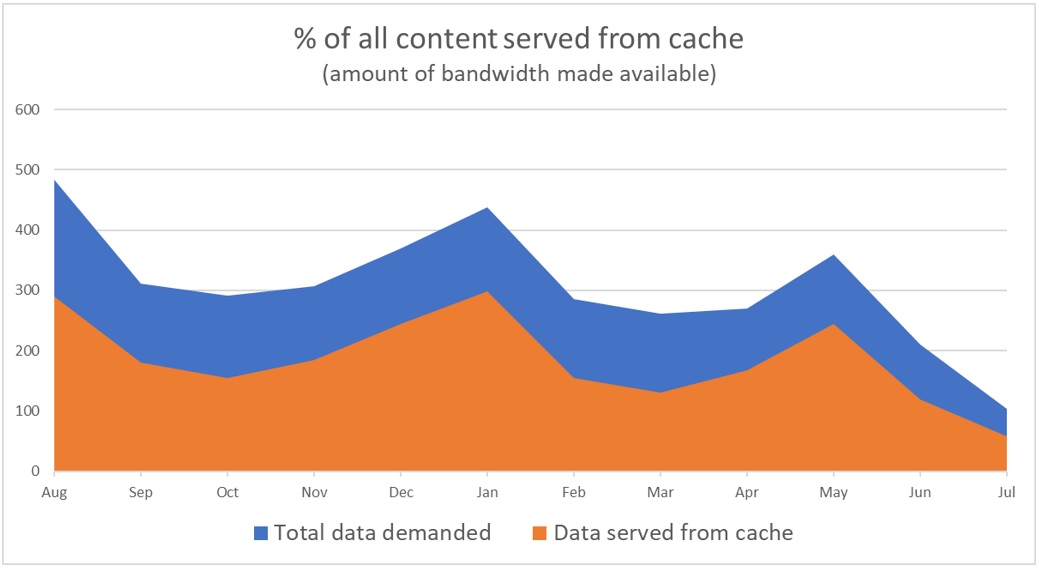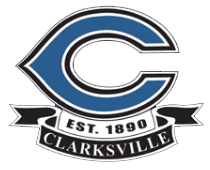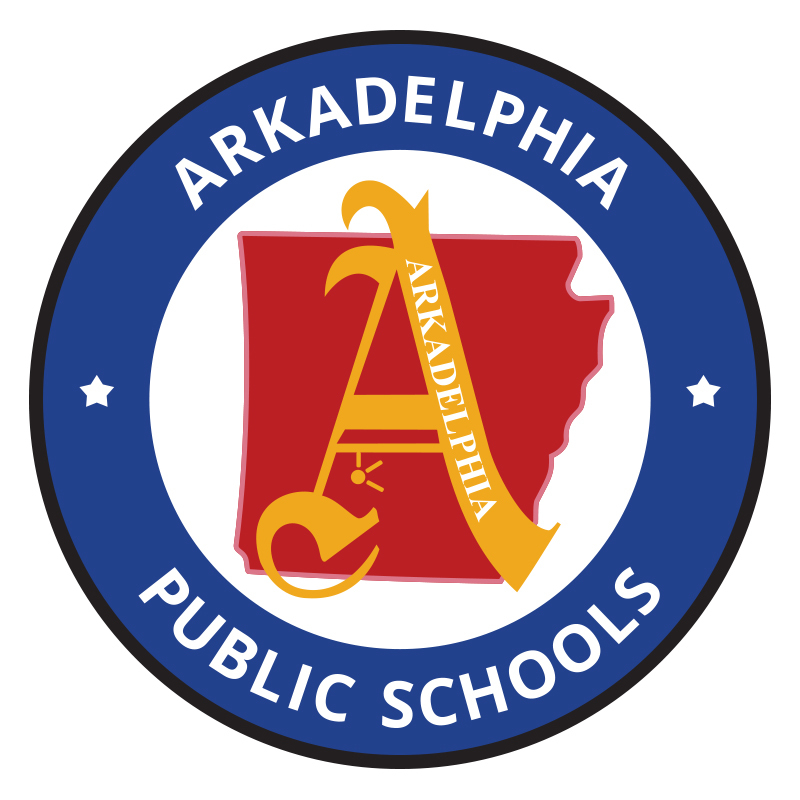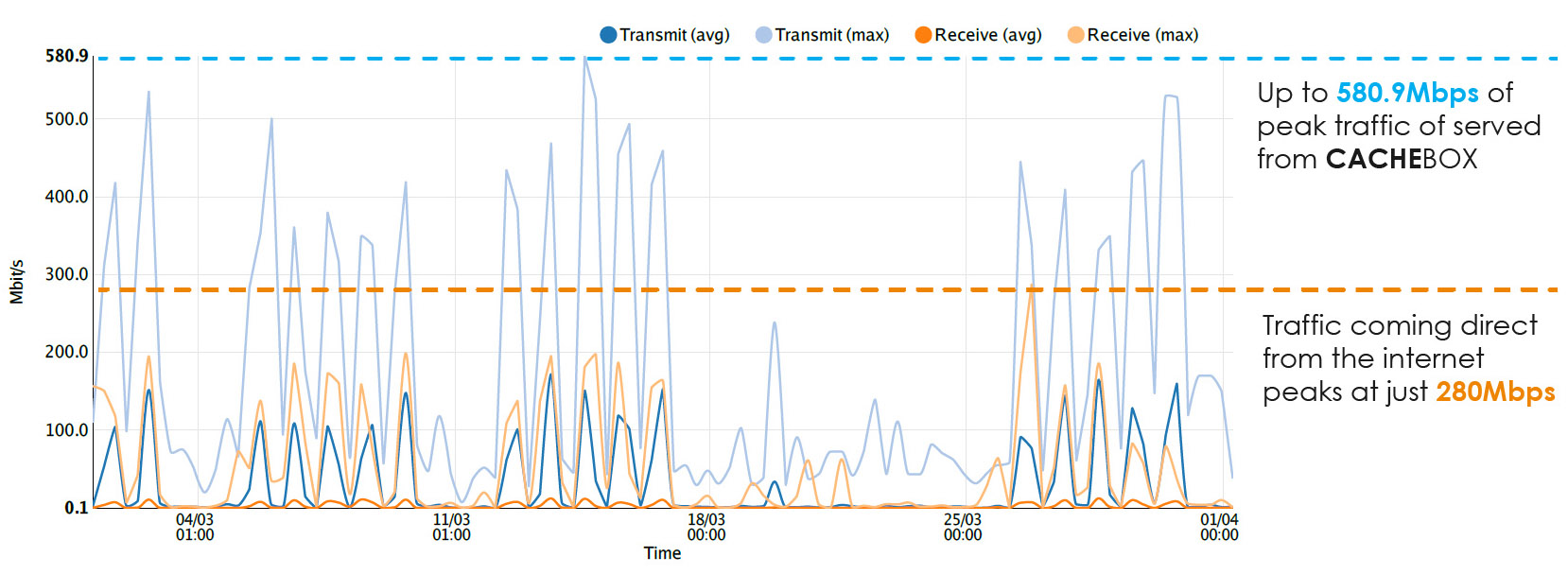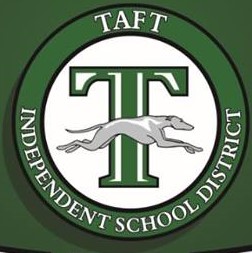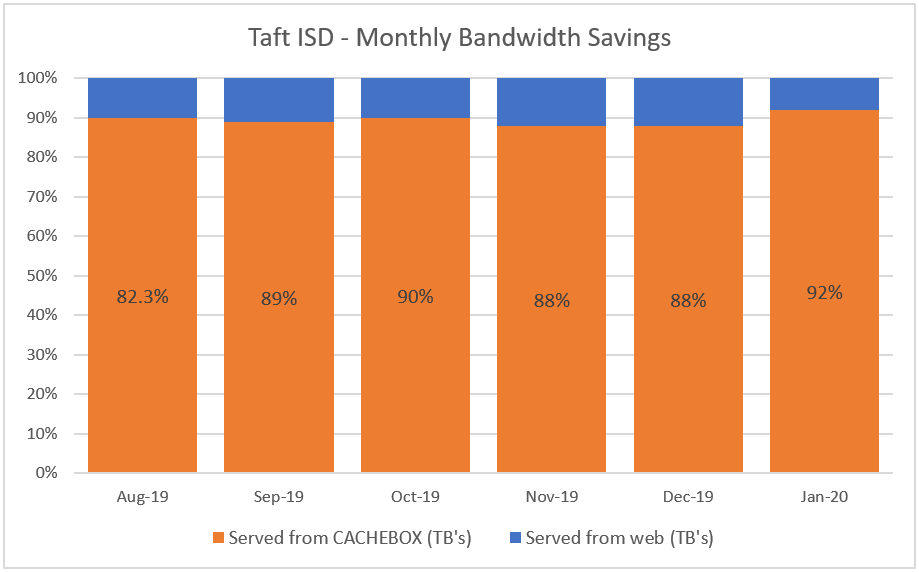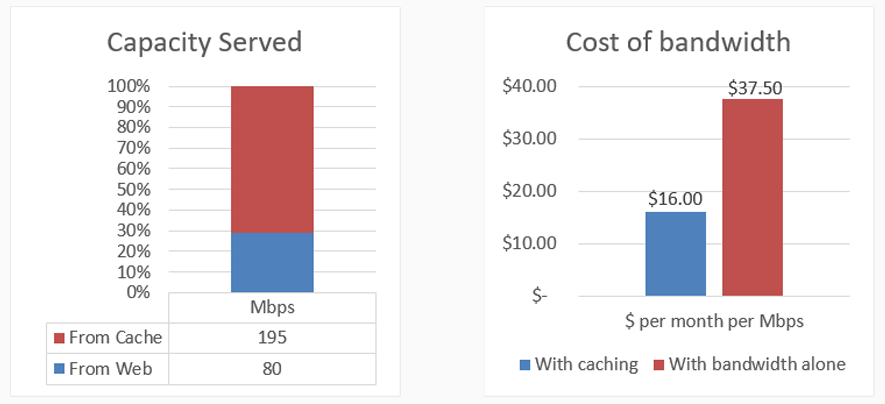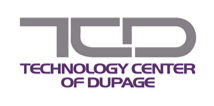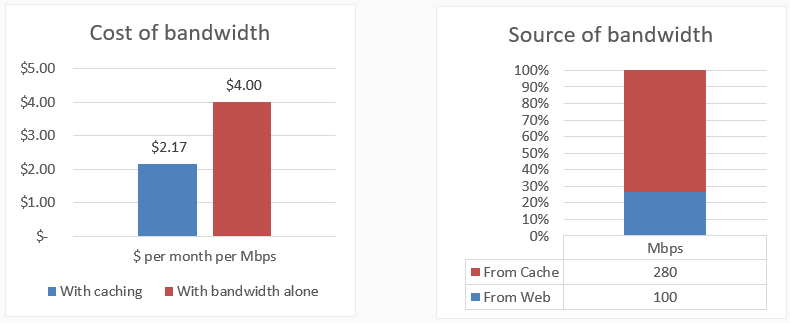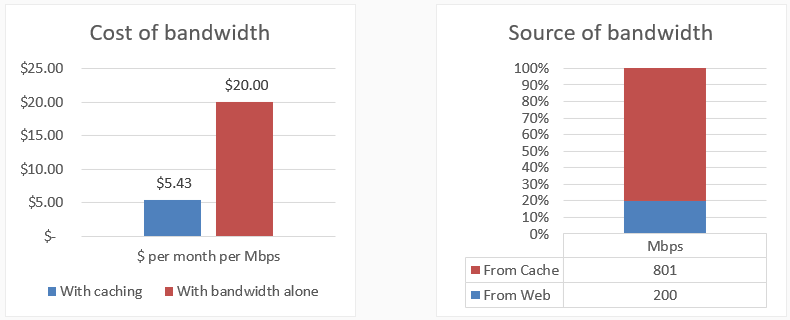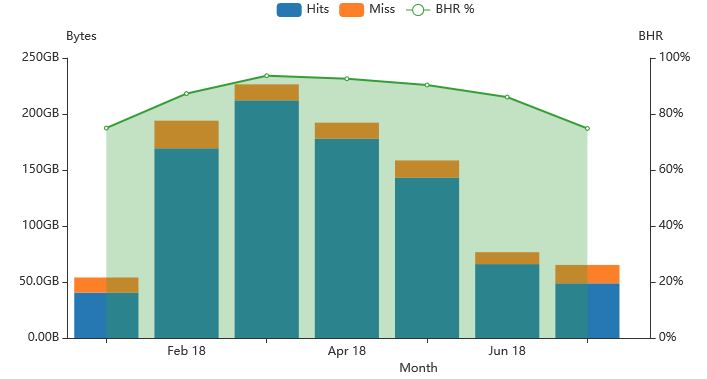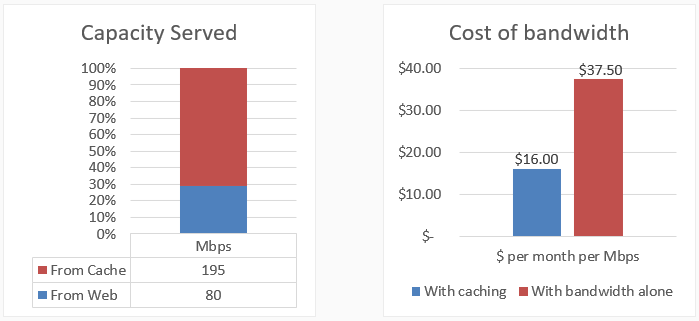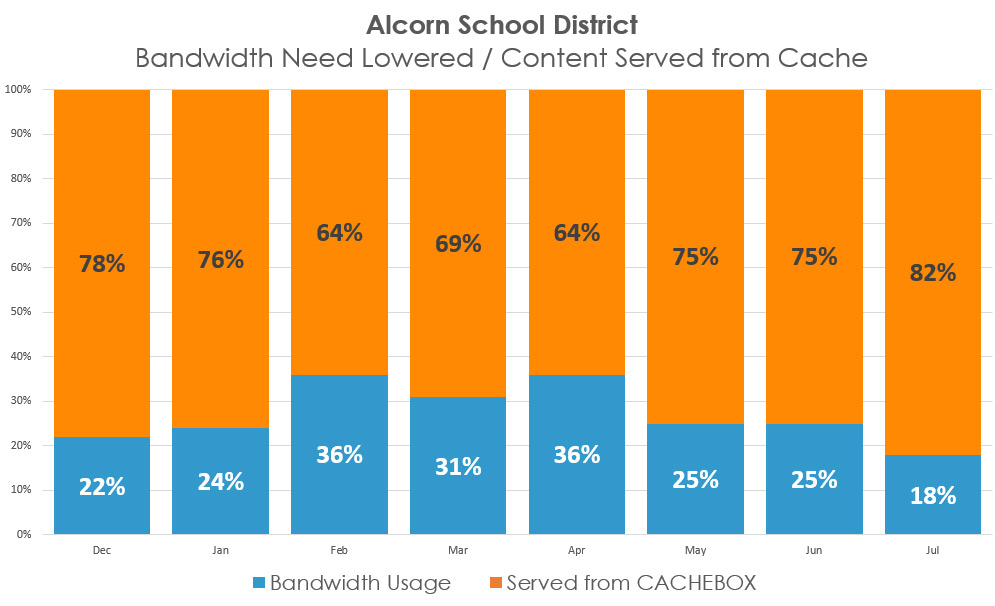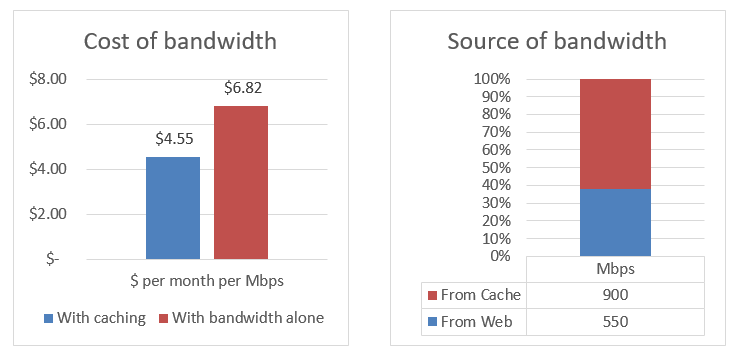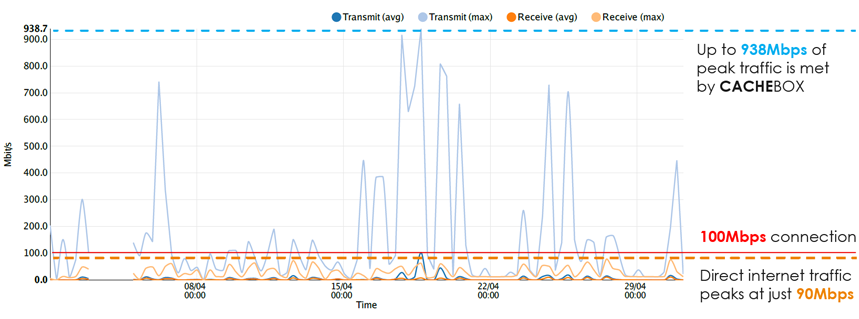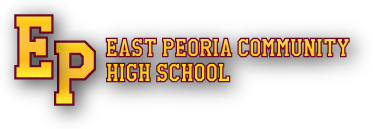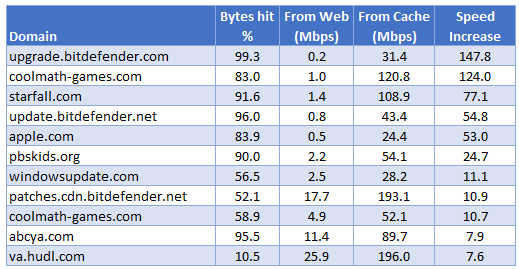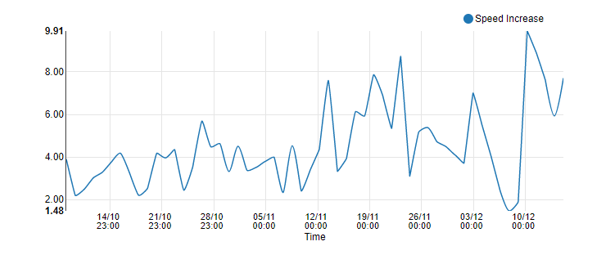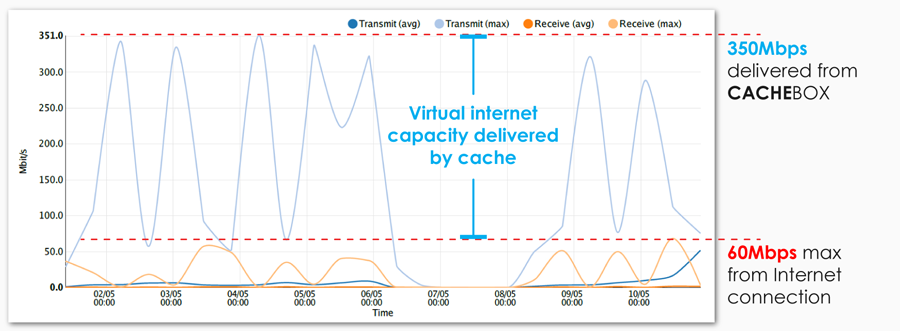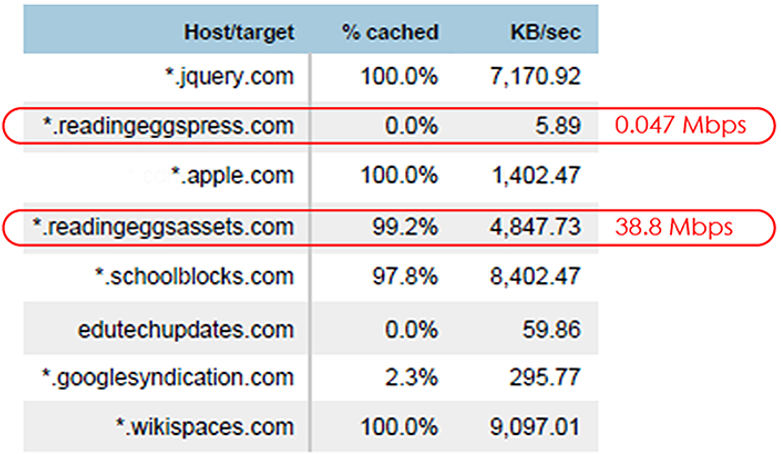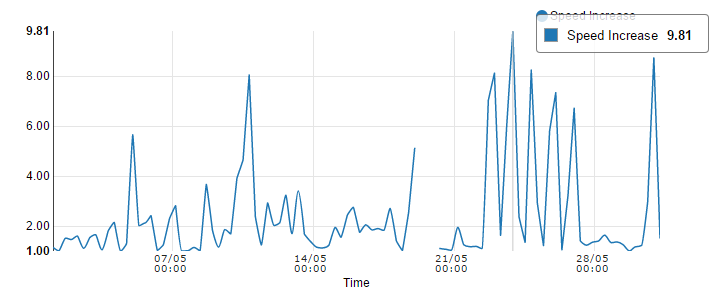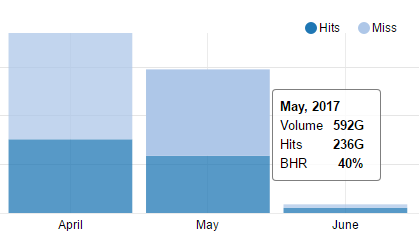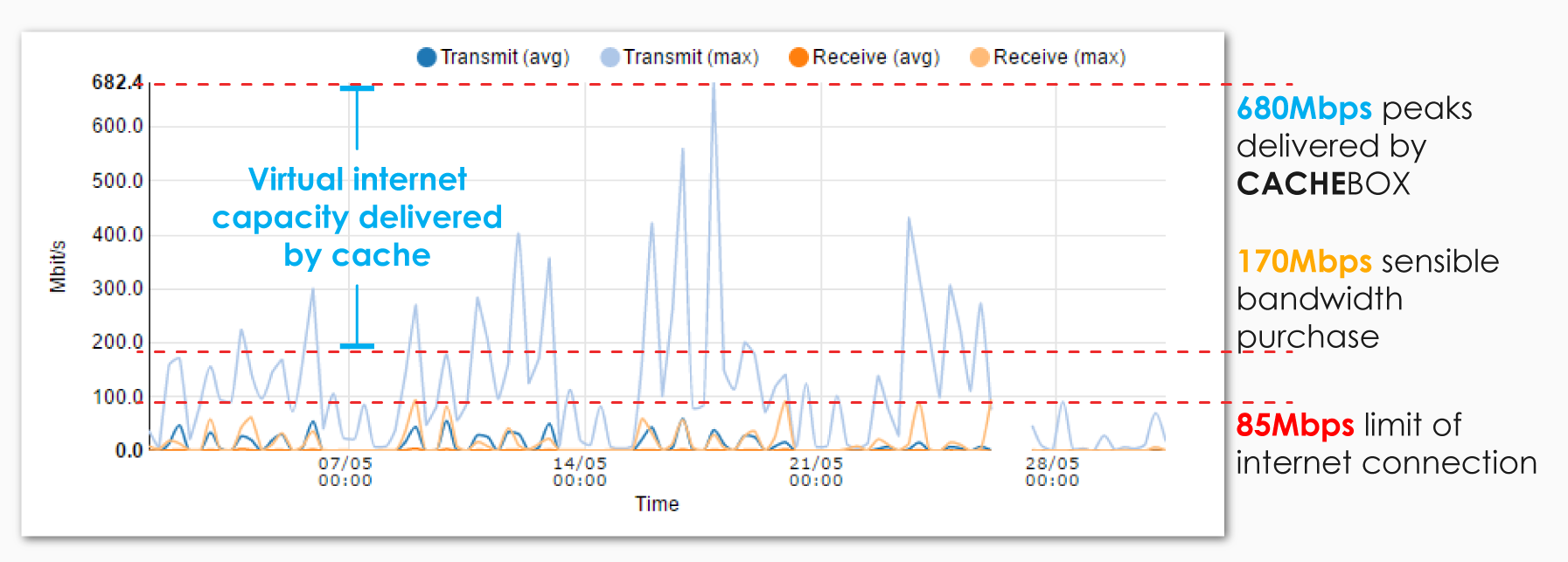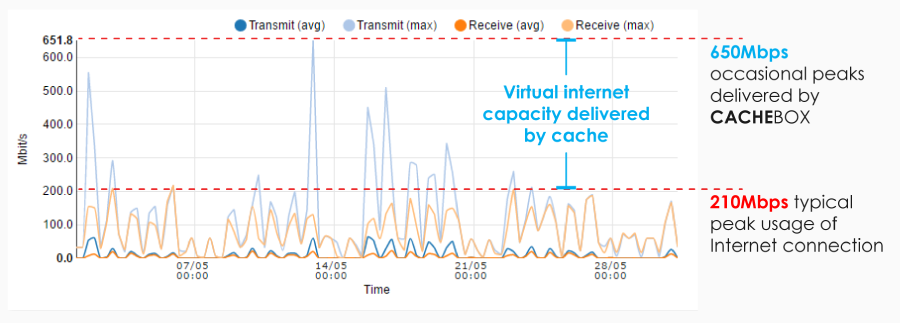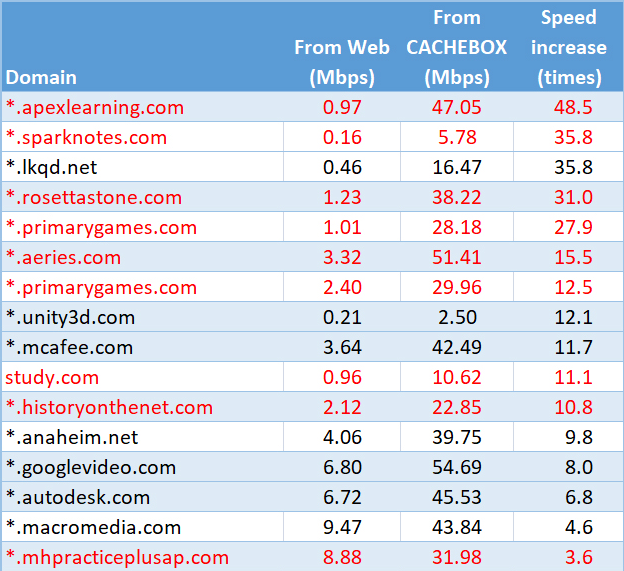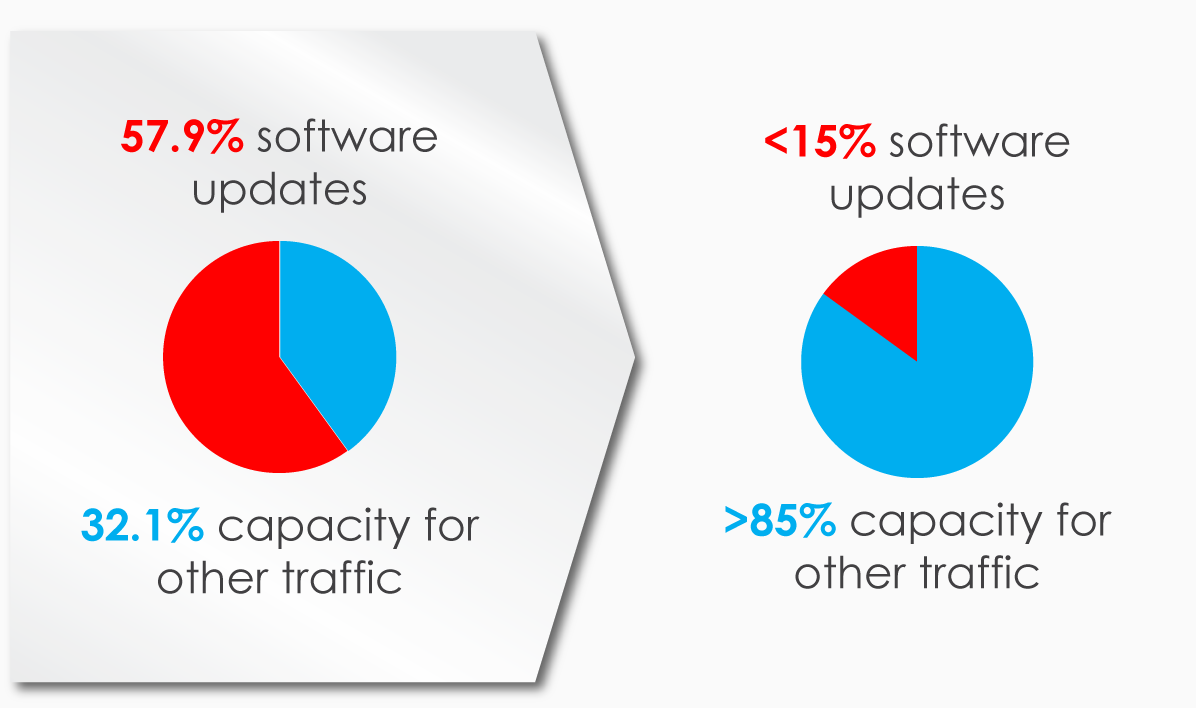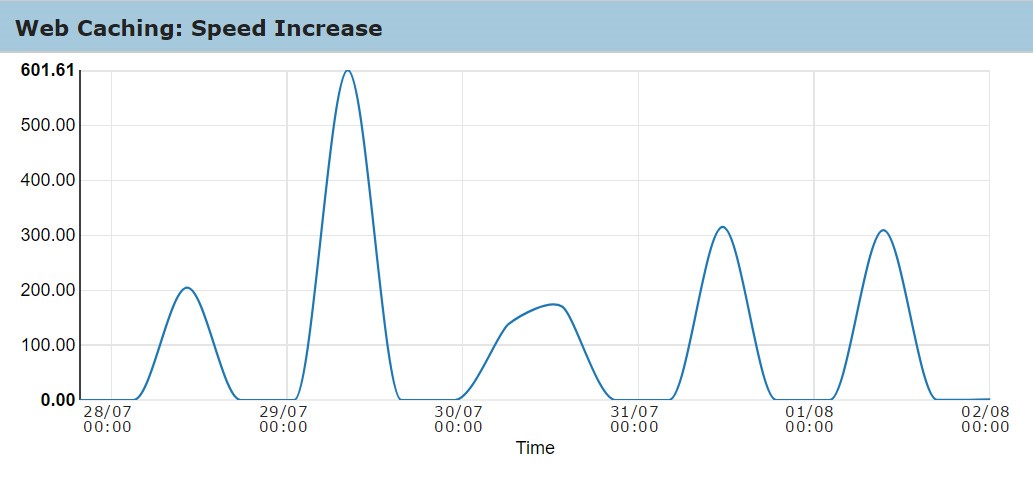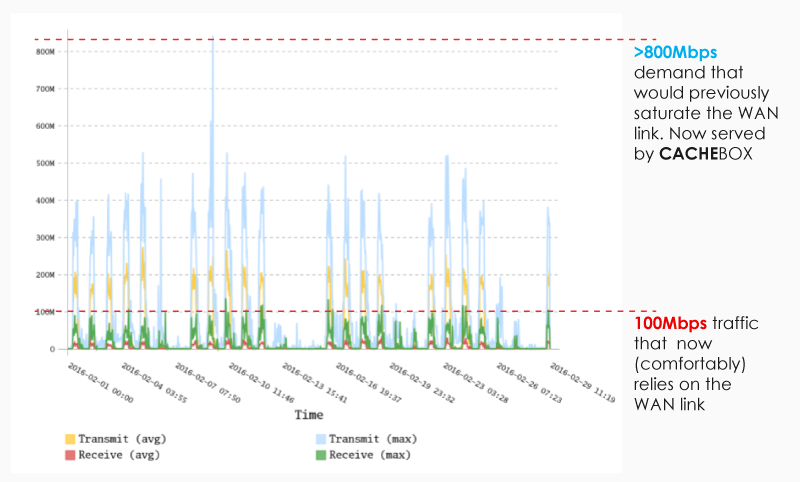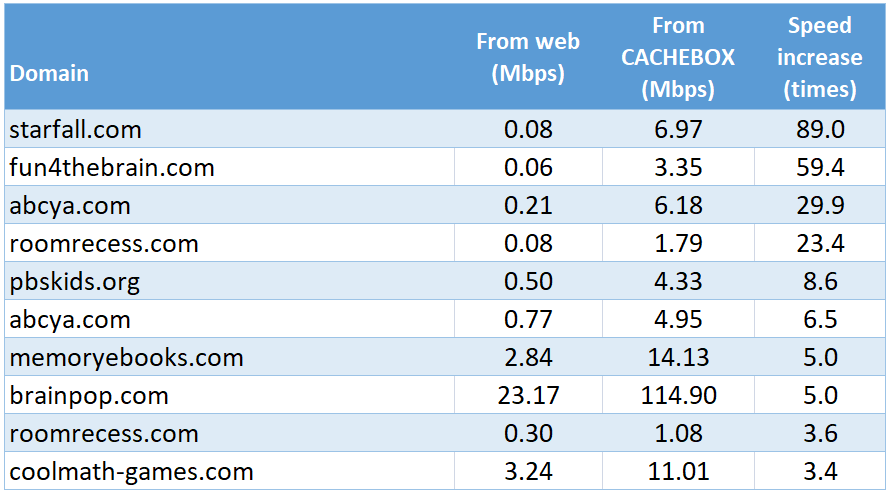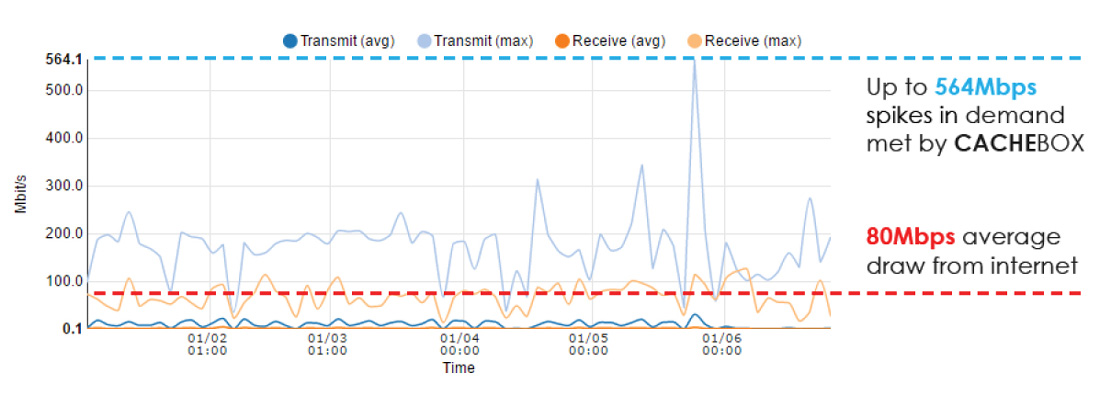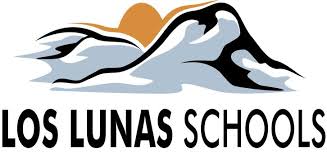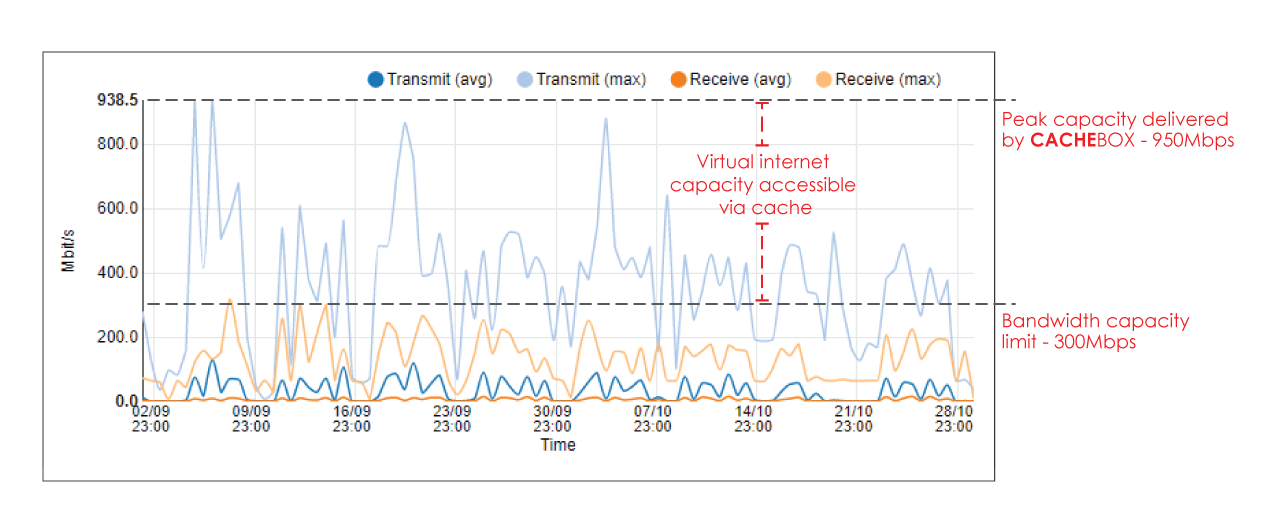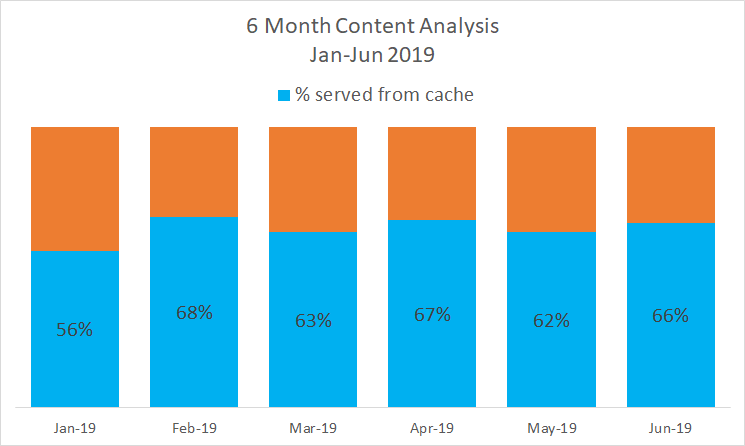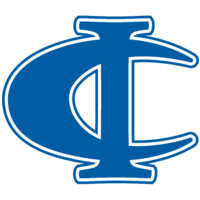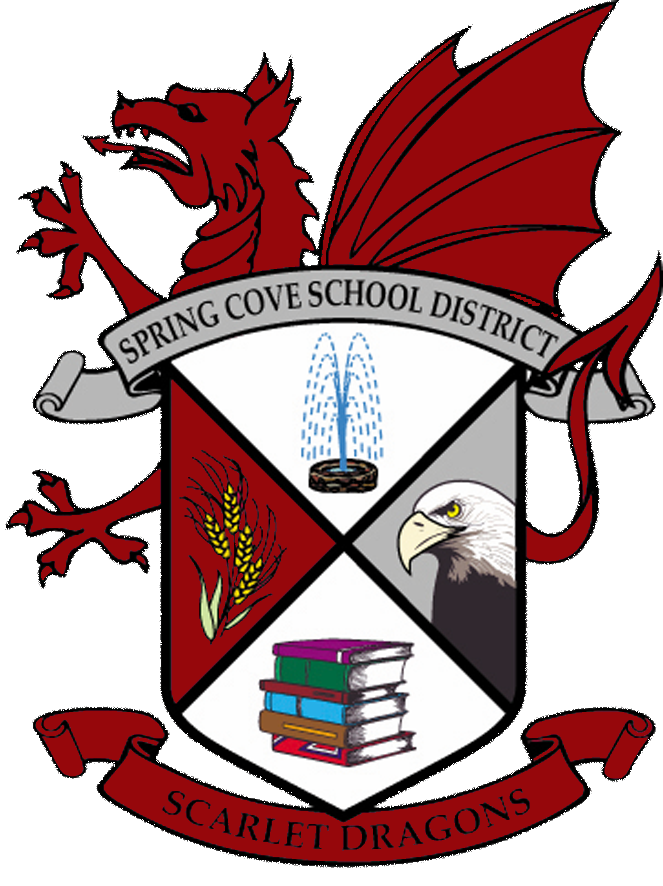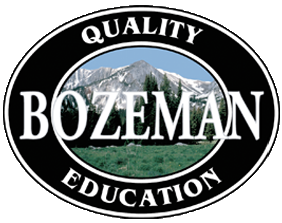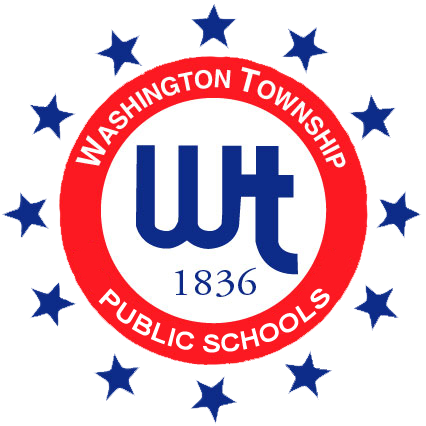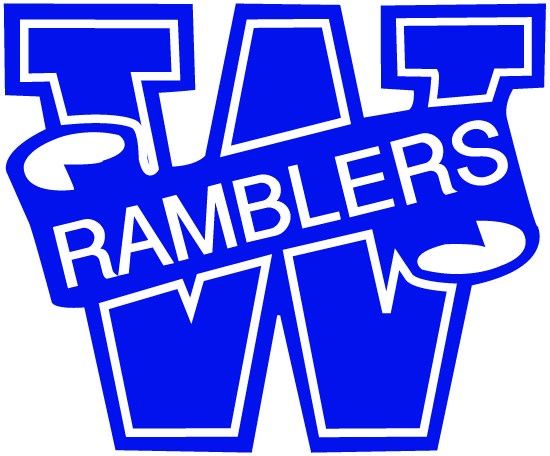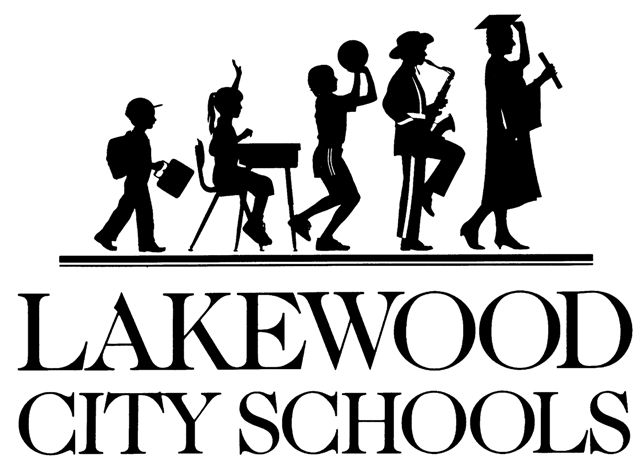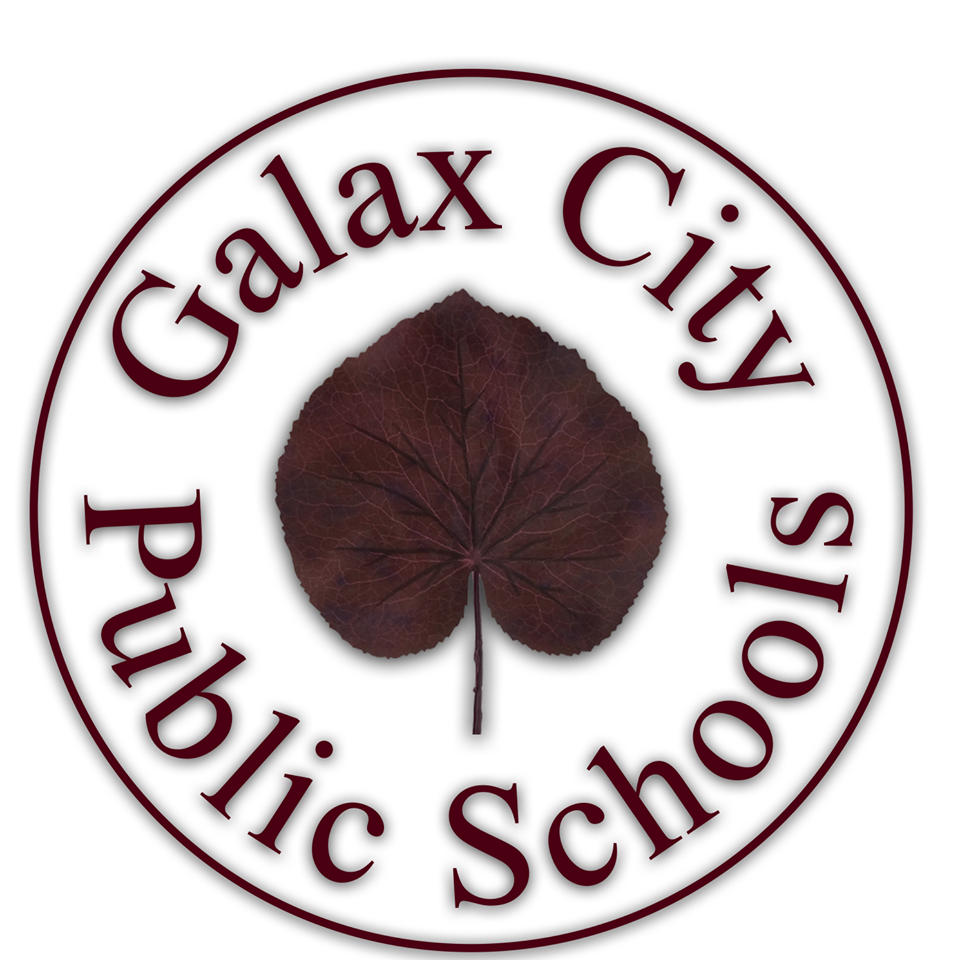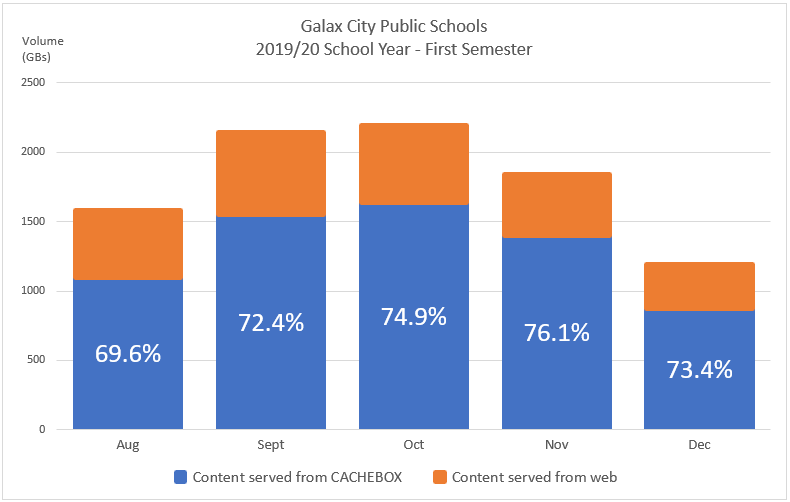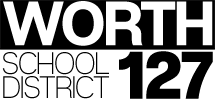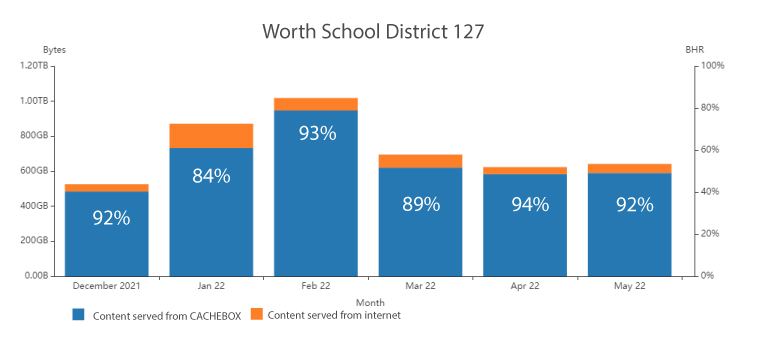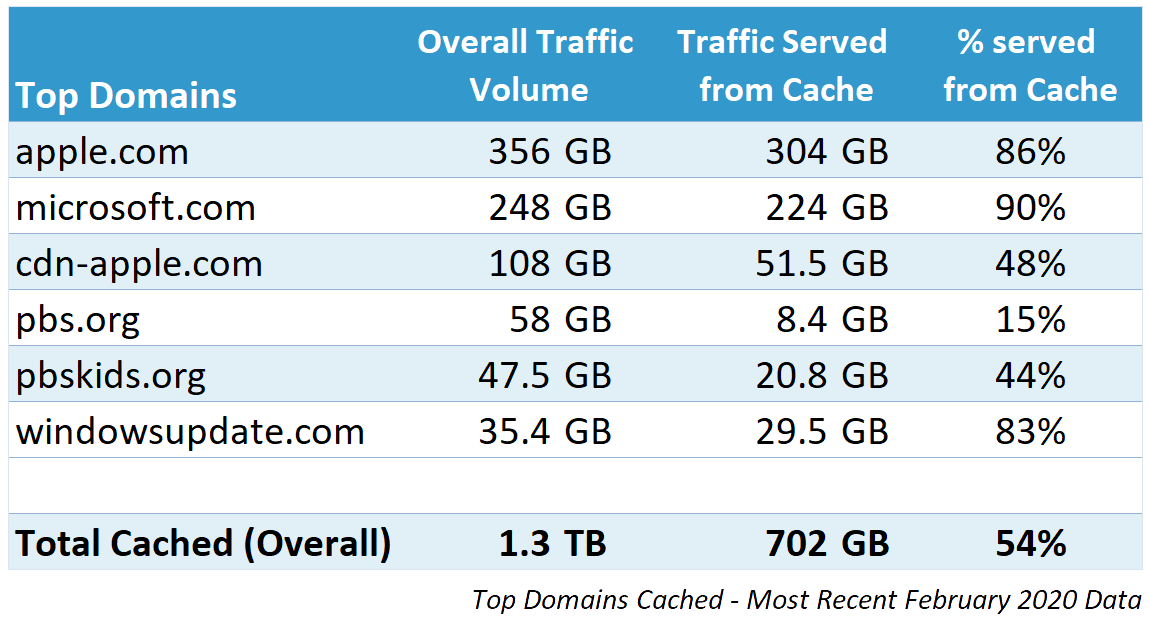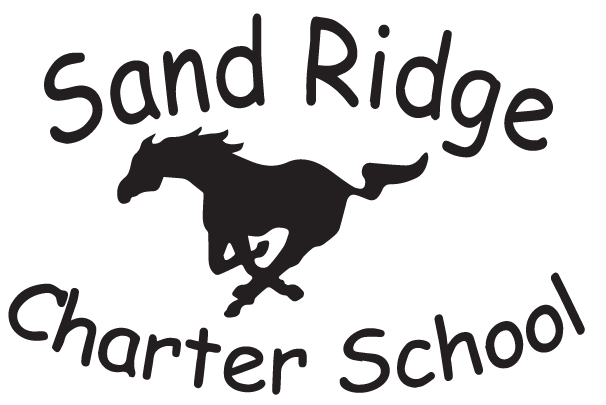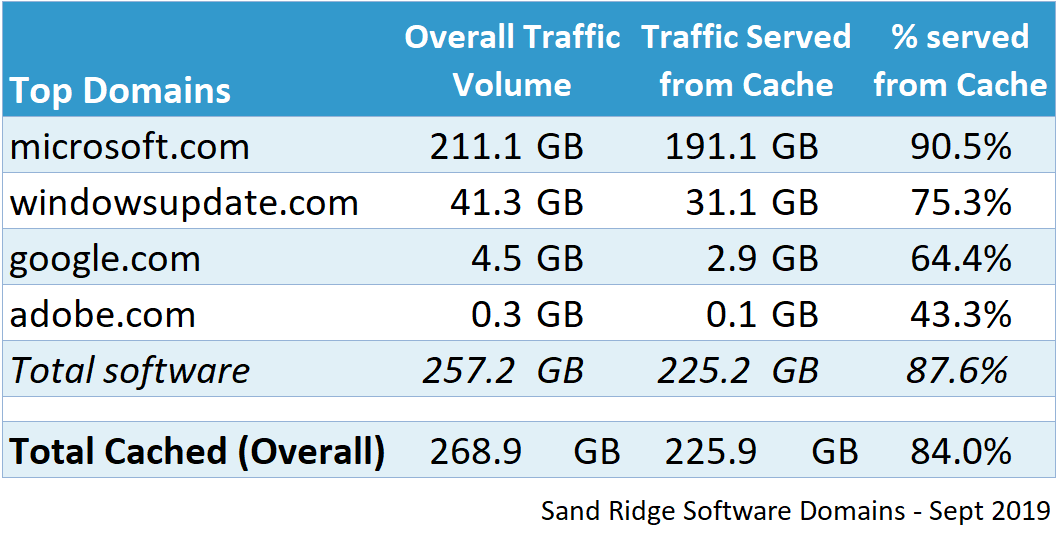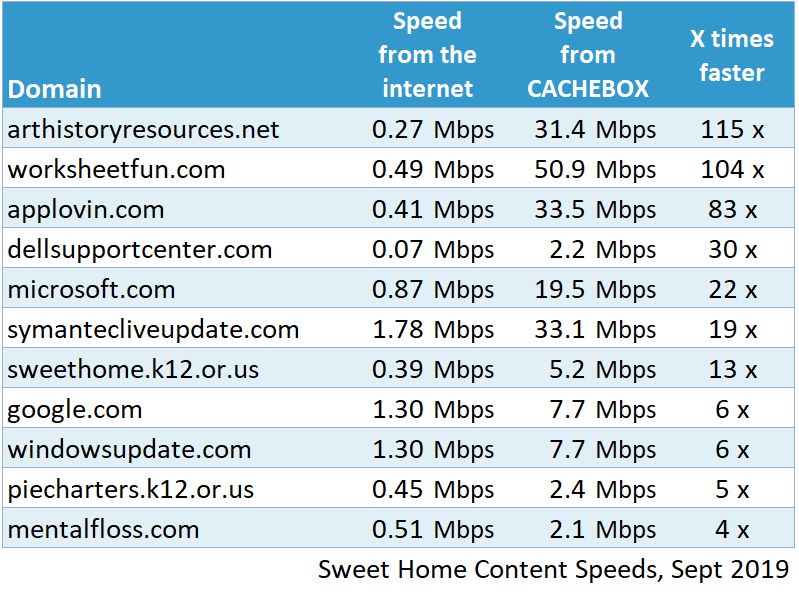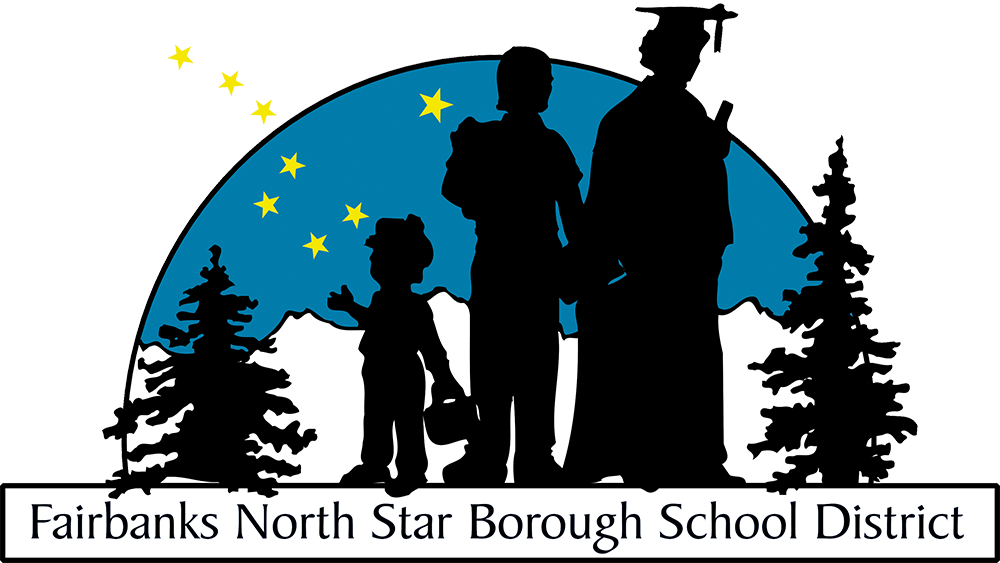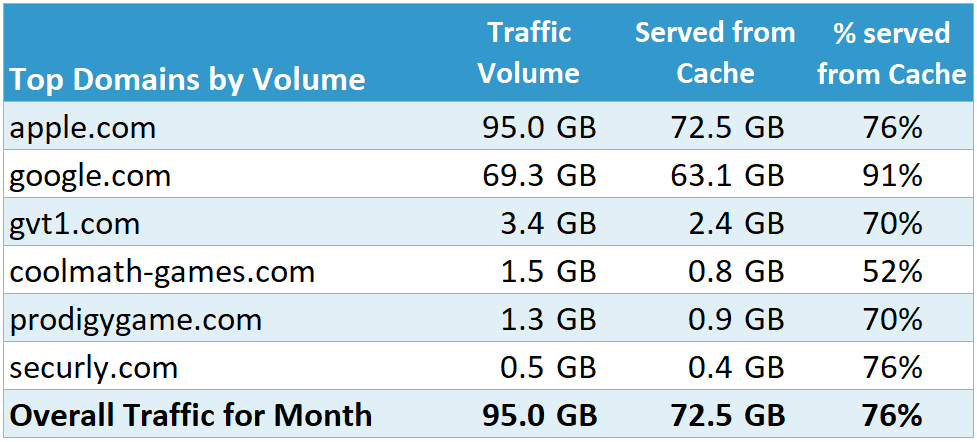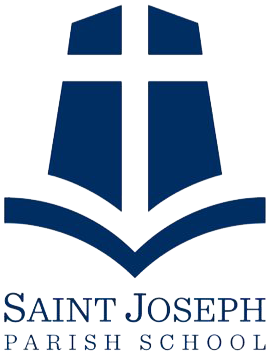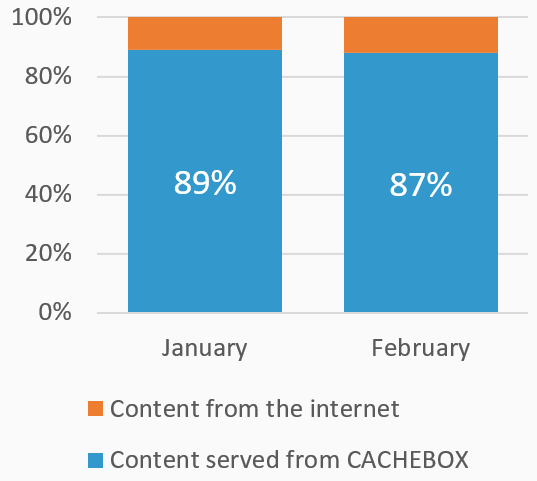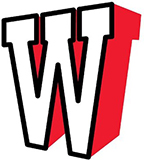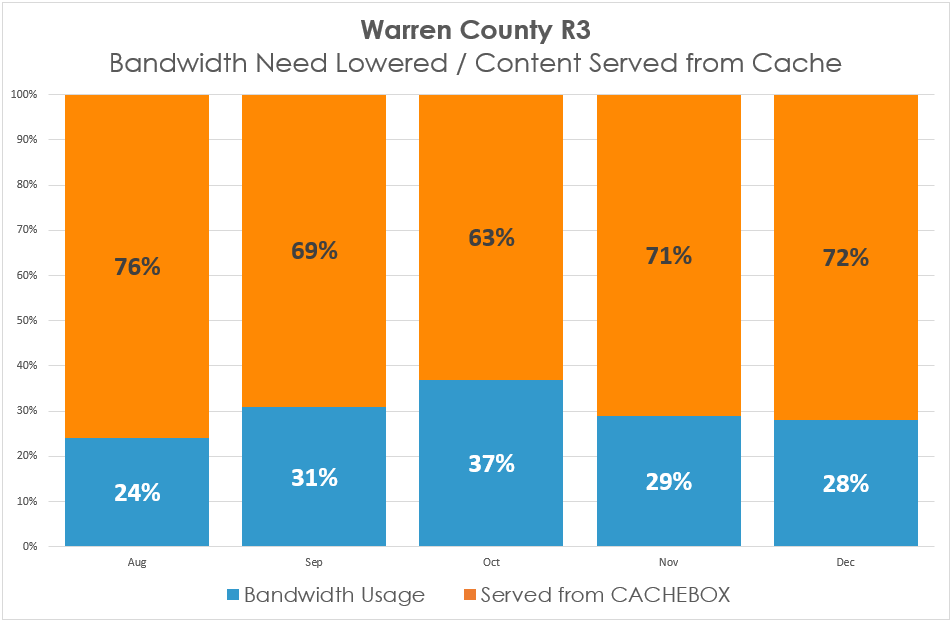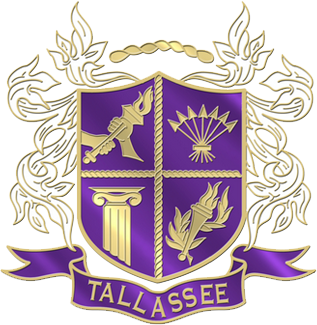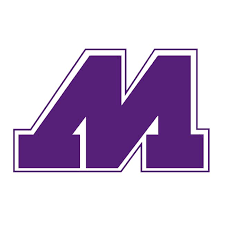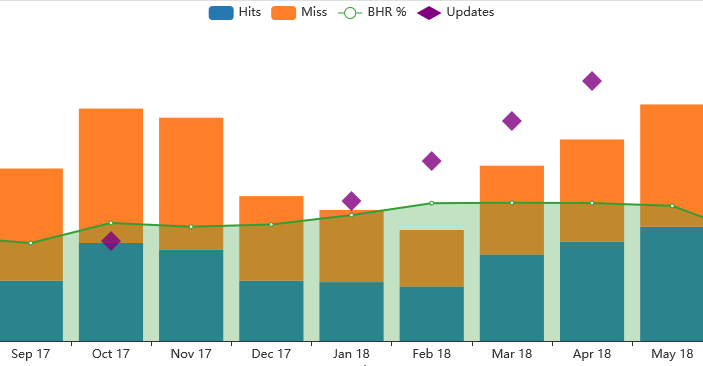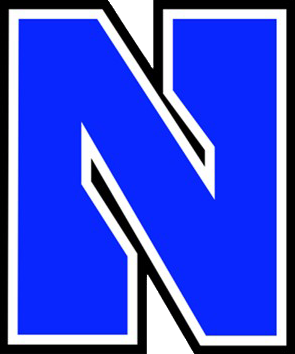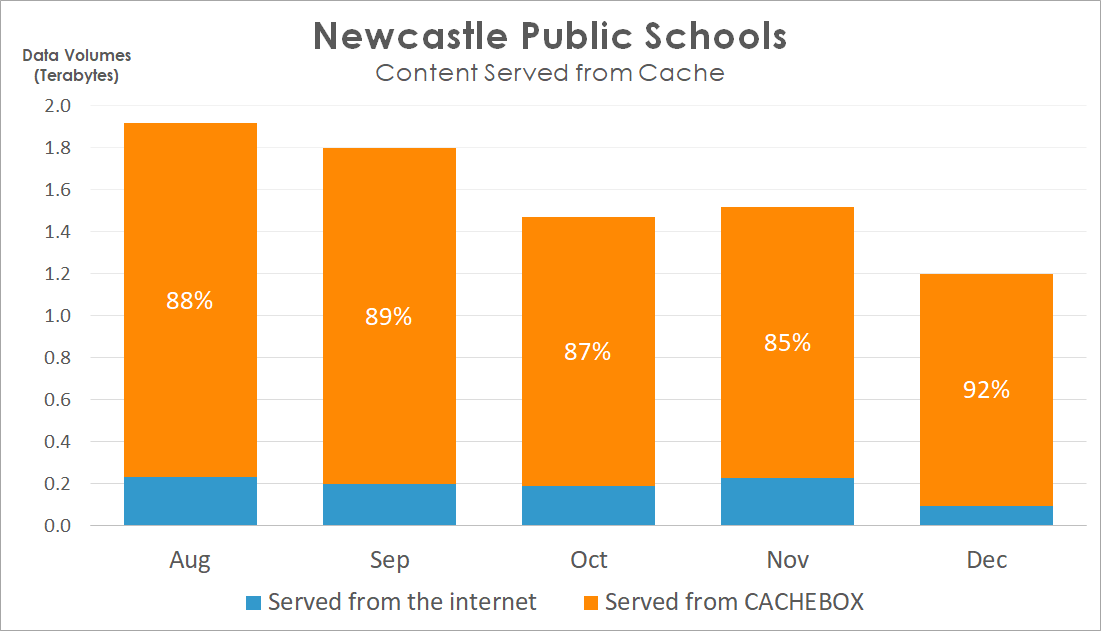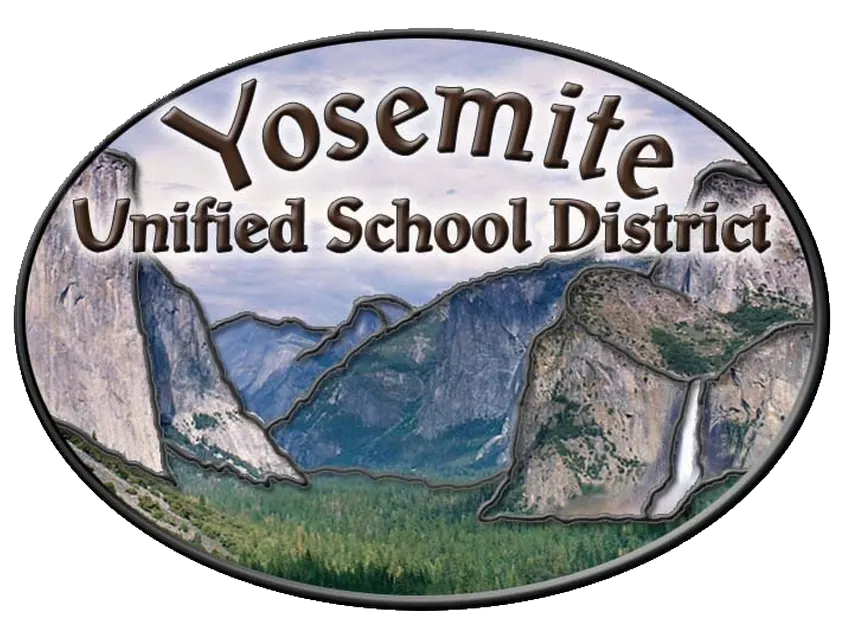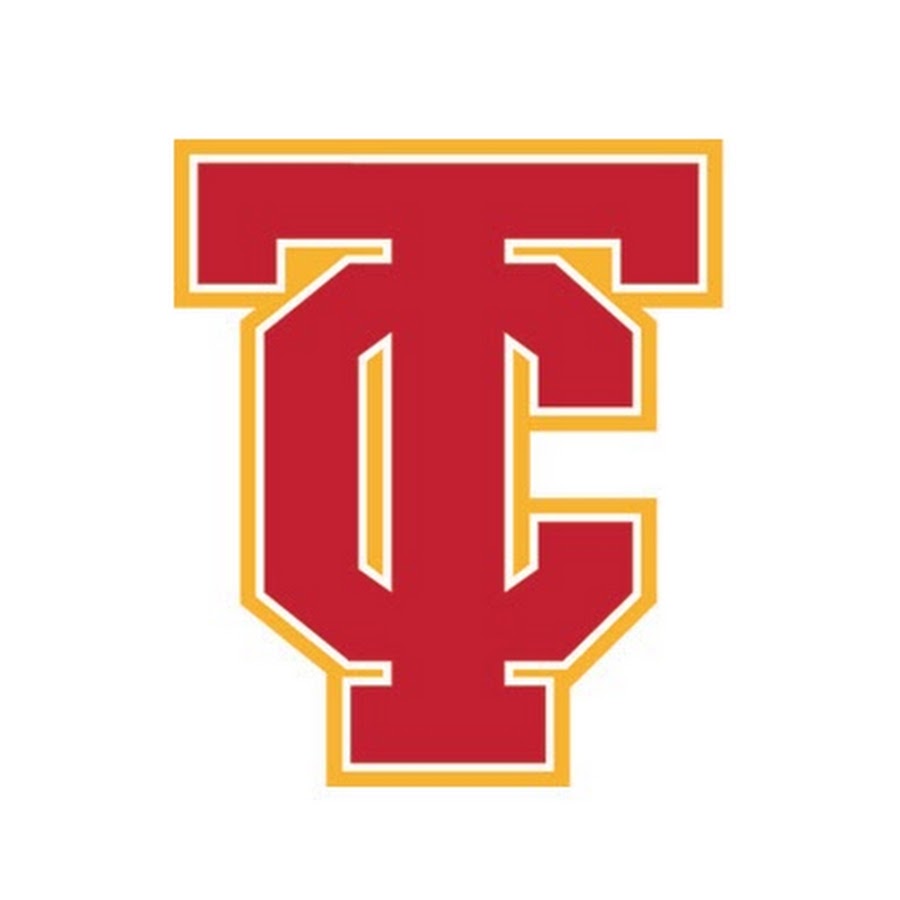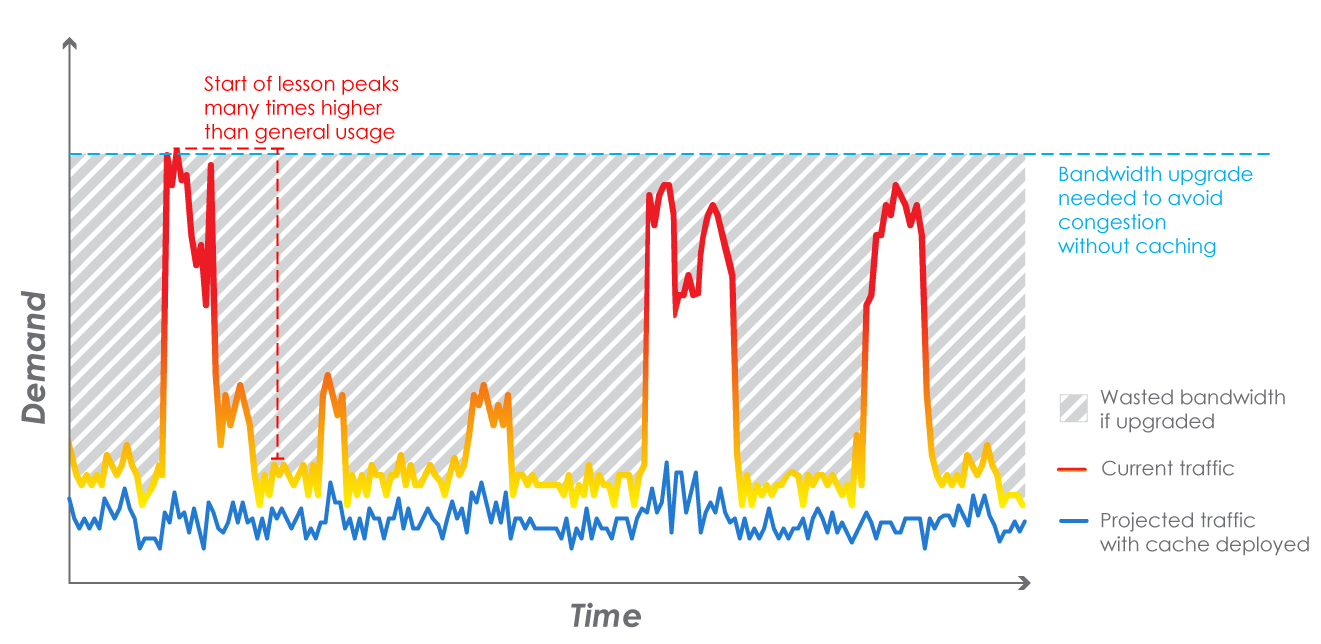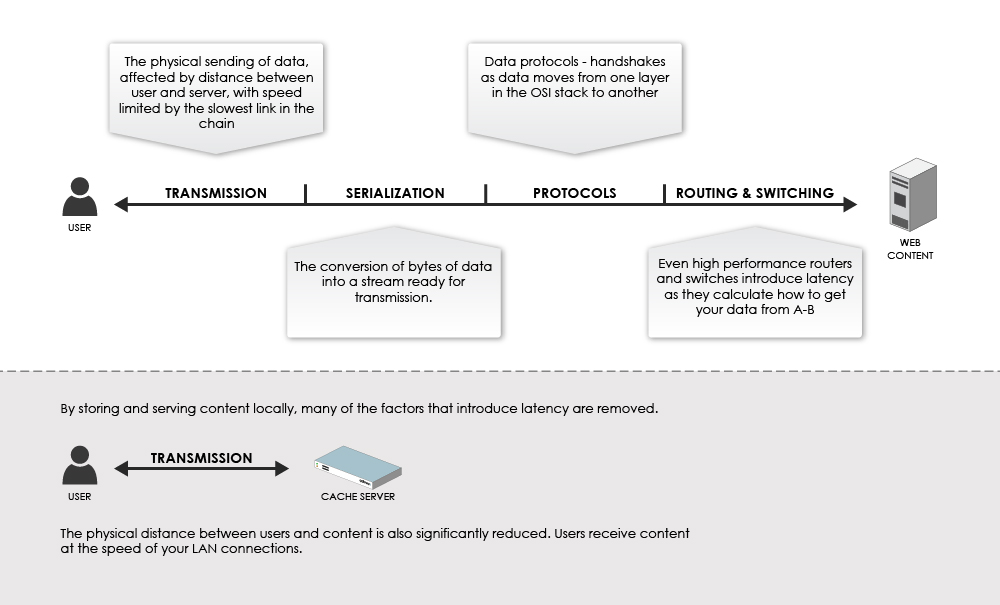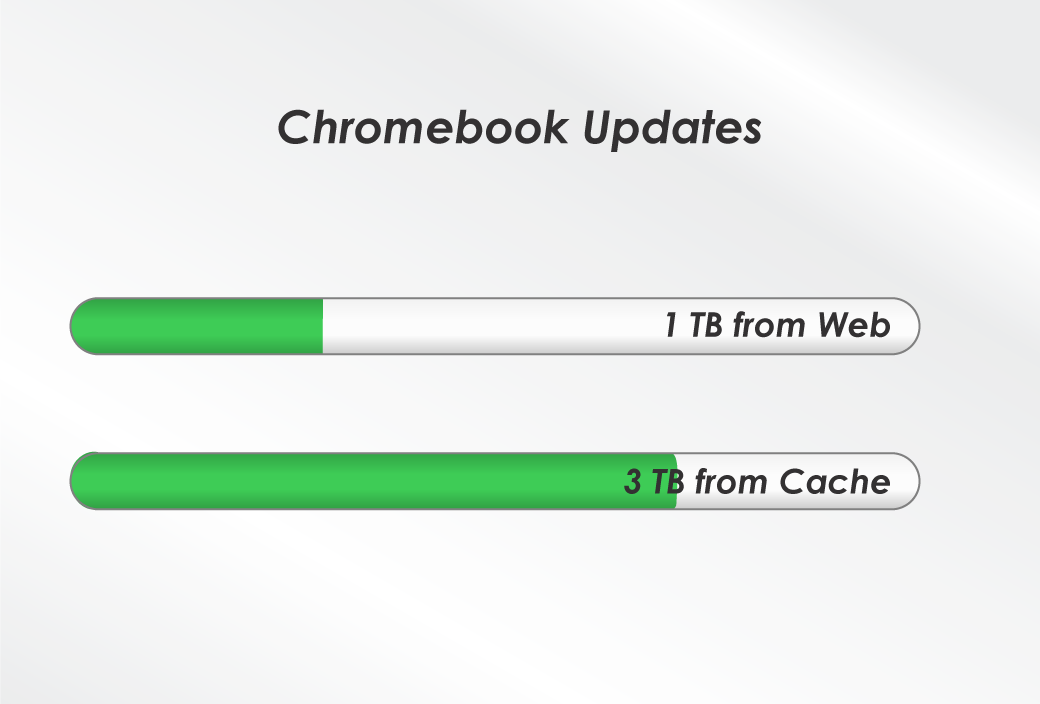
At Jefferson County School District, Chromebook updates were routinely congesting the district's bandwidth.
CACHEBOX now serves all repeat requests for updates, freeing up bandwidth for more important educational activities.
The solution
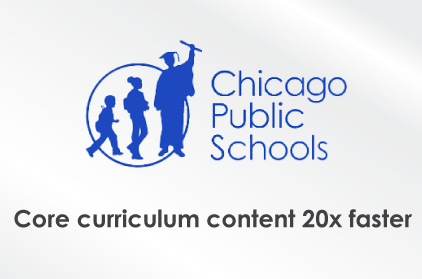
Chicago Public Schools has been using caches for over a decade to accelerate access to resources in the classroom.
In 2023, the district replaced their obsolete Cisco caching system with a CACHEBOX at each of its 600 schools.
The solution
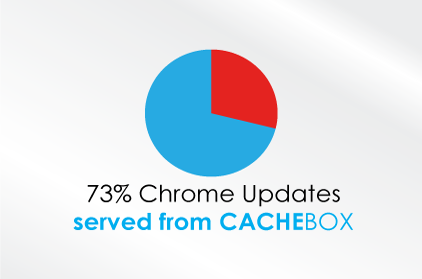
Highlands County School District was dealing with severe network congestion, as Chromebook updates were taking up to a week to download.
With CACHEBOX updates are now served 5 times faster, freeing up the network for more important educational content.
The solution
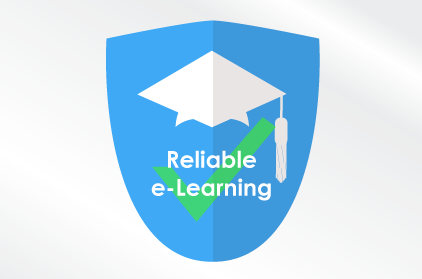
For years, Matanuska had relied on caching to ensure that staff and students could access digital resources quickly and reliably. But then its Qwilt cache server reached end of life.
Matanuska chose a central CACHEBOX deployment to support its 49 schools.
The solution
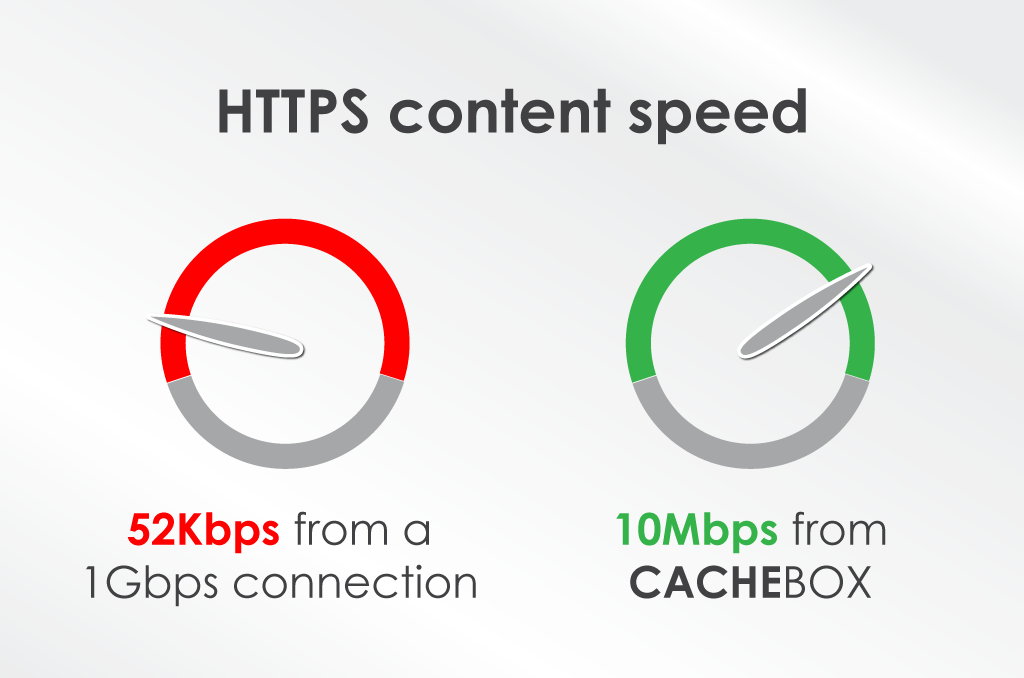
Whiteriver USD 20 would frequently find its network congested by devices downloading large software update files, causing the internet to slow down.
The district purchased a CACHEBOX to tackle its bandwidth hogs, resulting in Edu content (HTTP and HTTPS) arriving to students at much faster speeds.
The solution

Midland ISD chose CACHEBOX to improve the network for its 30,000 students and staff.
Intial testing showed promising results, with CACHEBOX serving 91% of Google and Chromebook traffic.
The solution
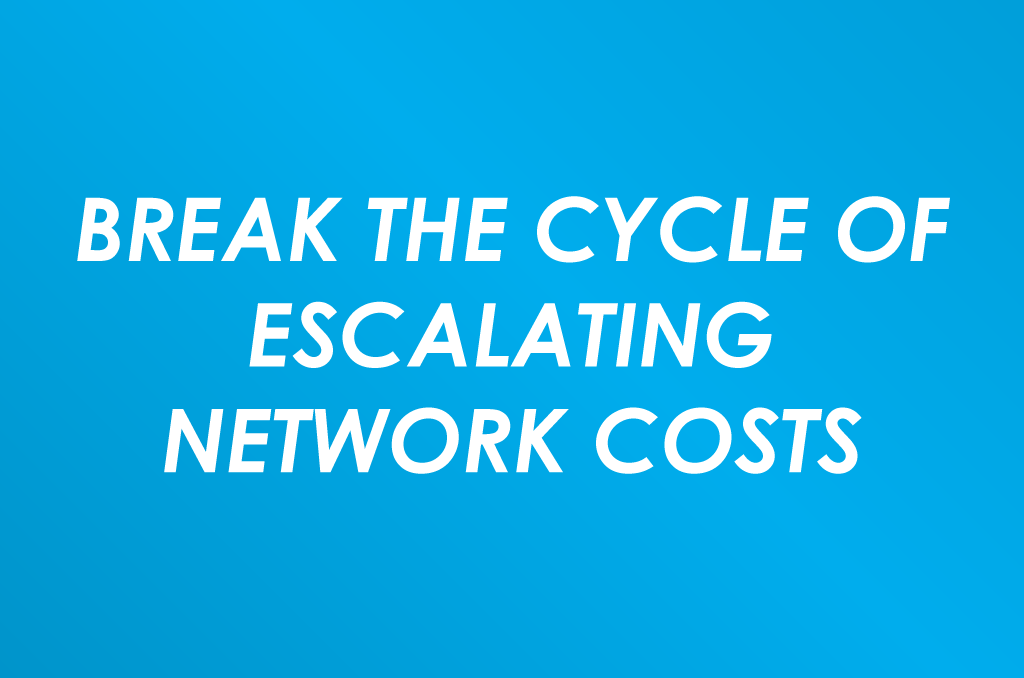
Over the course of 6 years, West Clermont has had to increase its Internet connection multiple times to accommodate growing demand.
The district turned to caching instead of opting for another costly and time-consuming bandwidth upgrade. By deploying CACHEBOX West Clermont has reduced its bandwidth usage by 50%.
The solution
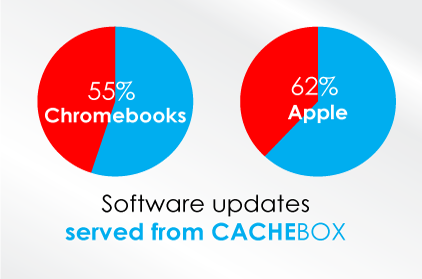
Despite increasing its internet connection to 1.1 Mbps per student, bandwidth-heavy content was saturating Lamoni Comm's network.
CACHEBOX met all three of the Tech Director's requirements, and has now reduced its bandwidth usage by 50%.
The solution
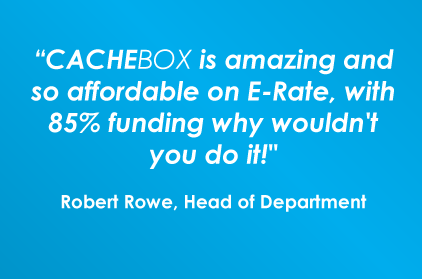
Finkelstein first deployed an E-Rate-funded CACHEBOX in 2016 as part of a broader network overhaul.
In July 2023, of 4.00TB total traffic, a massive 95% was served from cache. 3.5TB of this was Microsoft updates for staff and user access computers.
The solution
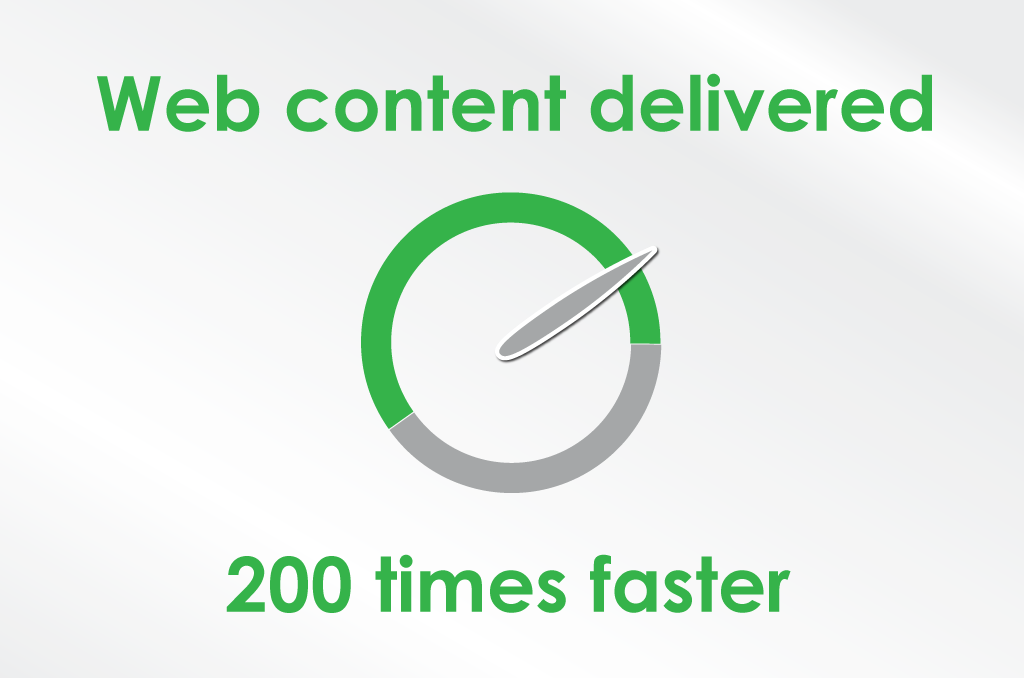
Despite having 4 times the FCC's recommended bandwidth per student, students and teachers still faced slowdowns during peak usage periods.
With the help of E-Rate funding, Fabens ISD purchased a CACHEBOX. Now Edu content (HTTP and HTTPS) is delivered up to 200 times faster.
The solution
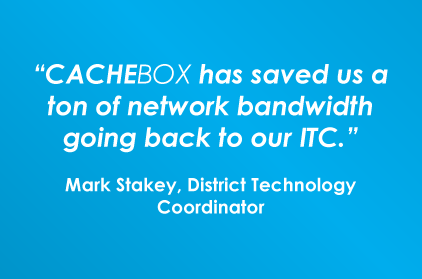
Despite a 500Mbps connection, Schoology content was often arriving to students at less than 1Mbps.
CACHEBOX has accelerated content to arrive 14 times faster.
The solution
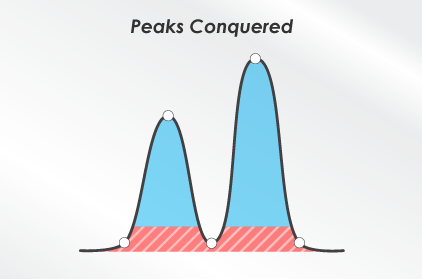
Although Hubbard Exempted Village Schools' average bandwidth utilization was well within its capacity, occasional Chromebook and Windows updates caused huge, disruptive spikes in traffic.
By deploying CACHEBOX, Hubbard eliminated spikes and reduced overall bandwidth usage by 50%, all at a fraction of the cost and time of a full network upgrade.
The solution
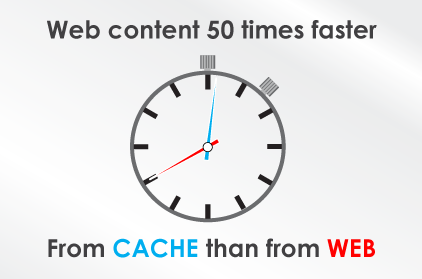
Somerton School District 11 initially planned to replace outdated Apple caching servers in three schools to enhance network capacity for its 1:1 Apple Air initiative.
Instead, the district purchased a CACHEBOX as a non-vendor-specific caching solution to alleviate pressure on its network.
The solution
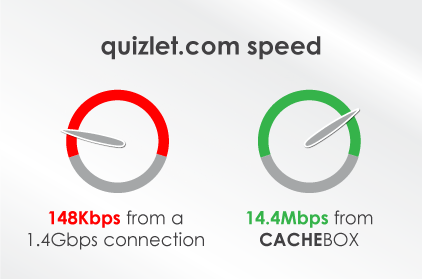
Since 2017, Central Plains has consistently reduced its bandwidth usage by caching 70% of software and device updates with CACHEBOX.
The district now also benefits from CACHEBOX's improved HTTPS caching featues.
The solution

Perry County School District needed a solution to maximise its limited bandwidth..
CACHEBOX offered better value for money than a bandwidth upgrade.
The solution
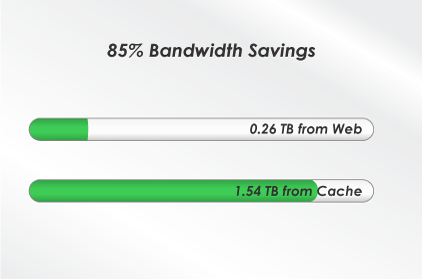
Bayless School District's connection was not sufficient to fully support its students, resulting in dramatic slowdowns in the classrooms.
With CACHEBOX the district is consistently serving terabytes of traffic, at much faster speeds.
The solution
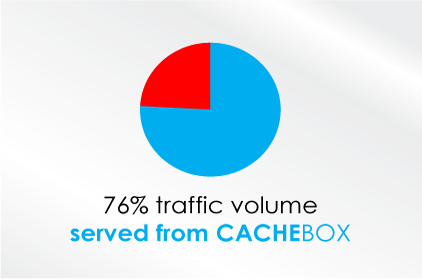
Libertyville would routinely find its network congested and its aging Apple caching server could not keep up with demand.
With CACHEBOX 76% of its content is served through caching, arriving at much faster speeds than before.
The solution

With 400 users connecting to its 30Mbps internet at peak times, Osage consistently found its bandwidth maxed out.
CACHEBOX offered a cost-effective solution to expand its BYOD scheme, rather than opting for a bandwidth upgrade.
The solution
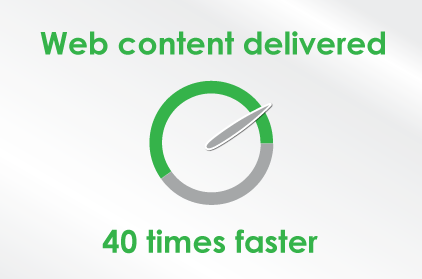
Chromebook updates were saturating New York Mills' network, leaving students and staff frustrated.
CACHEBOX quickly helped to ease the pressure from Chromebook updates, caching terabytes of updates within the first month of deployment..
The solution

Kake City School District is already paying thousands of dollars for its 200Mbps connection and needed a solution to optimize its bandwidth.
CACHEBOX is eliminating congestion and serving gigabytes of content to students.
The solution
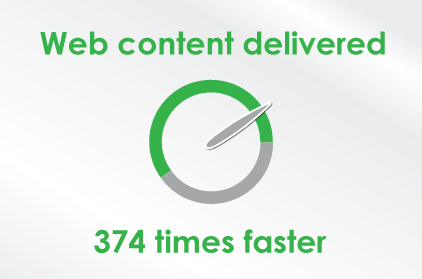
With plans to expand its 1:1 scheme, Kalispell needed a way to prevent the disruption congestion was causing in its classrooms.
With CACHEBOX educational content is now arriving almost 400 times faster.
The solution
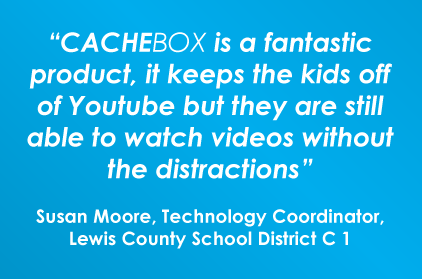
Lewis County's failing YouTube filter meant teachers had no way to control the content that students were exposed to.
With CACHEBOX video content is now distributed to students through the Media Library, keeping the students safe and allowing teachers to continue using videos in their lessons.
The solution
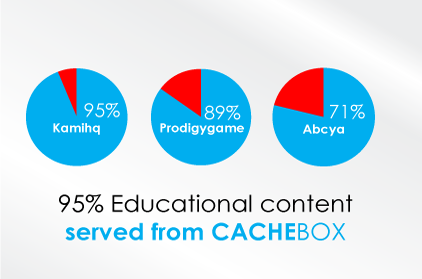
Martins Ferry's connection could not keep up with the demands from the district's 1:1 Chromebook scheme.
With CACHEBOX content is served faster and students can now access learning content that was previously unavailable.
The solution

Hundreds of students connected at the same time was causing slow web access at Waldron Public Schools.
CACHEBOX is removing terabytes of traffic from its internet connection.
The solution
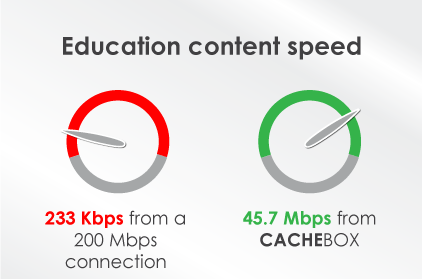
With the demand for content rising, Schlarman's connection could not keep up - causing disruption in classrooms.
With CACHEBOX the district is using less than half of its connection, and content is served up to 200 times faster.
The solution

Community School District first purchased a CACHEBOX to optimise its bandwidth capacity.
Now, in order to further improve its internet connectivity, the district has chosen to upgrade both its CACHEBOX device as well as its bandwidth connection.
The solution

Manhattan Christian Academy would regularly find its network congested by devices downloading large software update files, causing the internet to slow down.
The school purchased a CACHEBOX to tackle its bandwidth hogs and increase its browsing speed.
The solution
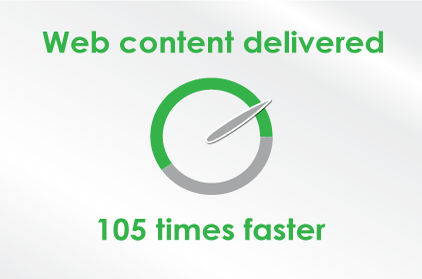
With whole classes accessing the same online content at the same time, Our Lady of Mount Carmel's 100Mbps link was regularly congested.
With CACHEBOX congestion no longer a problem and learning content is now arriving up to 105 times faster.
The solution

Despite paying out $30,000 a month, classroom demand would quickly overwhelm Yakutat's 25Mbps connection.
CACHEBOX has slashed the amount of bandwidth needed.
The solution
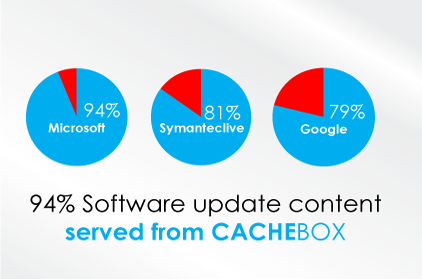
Despite an impressive 6.4Mbps per-student capacity, Maine School Admin District 49's network would still grind to a halt.
CACHEBOX is meeting over 70% of all content demanded – but 'updates' performance is even better.
The solution

In order to sufficiently support it's 143 students, by FCC standards, Amsterdam Elementary District 75 needs more than triple its current bandwidth.
With CACHEBOX the school district can comfortably support all of its students with its current bandwidth.
The solution

With 37,000 students to support, East Baton Rouge wanted a caching solution that would cache everything – especially HTTPS content.
Now, bandwidth consumption in the district's central distribution center has been slashed by 70% – 90% every month, serving Terrabytes of data much faster than the internet.
The solution
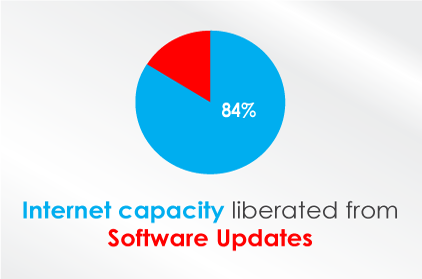
With software updates rapidly congesting its network, Yelm Community Schools needed a solution other than a bandwidth increase.
With CACHEBOX the district is served a total of 6.03TB's worth of content – including software updates, antivirus updates and important classroom content.
The solution
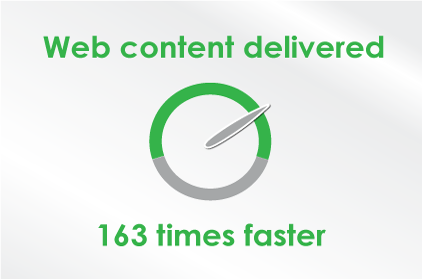
With hundreds of repeat requests daily, Believers Academy deployed a CACHEBOX solution to free up bandwidth and increase web-content speeds.
The solution

With a 1:1 scheme consisting of 1000s of Apple devices, Discovery High School quickly found out how great an issue software updates are going to be for its network.
After deploying CACHEBOX, 98% of content from Apple.com is served through cache – at much faster speeds.
The solution
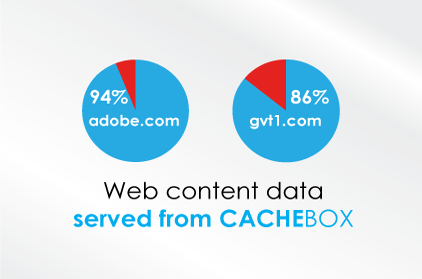
With thousands of devices all connecting to the internet at the same time, Mandan SD's network was sure to suffer.
To avoid internet congestion disrupting precious learning time, the school district opted to deploy a CACHEBOX, thus optimizing its existing bandwidth.
The solution
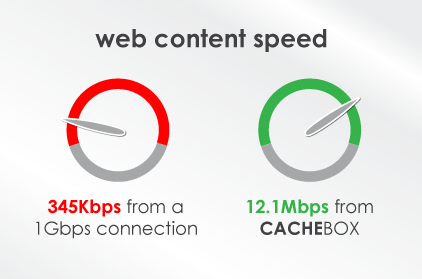
With several hundred operating system updates all downloading at the same time, Central Valley's classroom learning was put at risk.
Since deployment, CACHEBOX is picking up the strain caused by software updates while also serving learning content through the cache at much higher speeds.
The solution
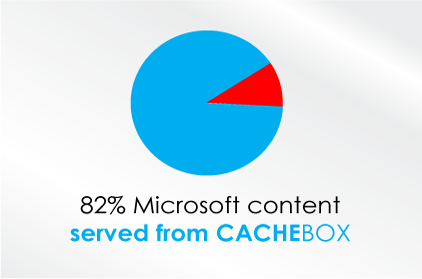
Bagdad Unified School District's 300Mbps connection was routinely congested with huge software files, and the school district needed a solution to cope with all of the demand.
CACHEBOX provided the ideal solution to the school's problems and now it frees up to an average of 70-80% of software update content monthly.
The solution
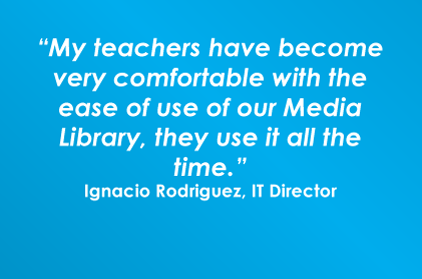
Childress Independent School District originally deployed CACHEBOX to deliver state testing.
Since then, teachers discovered CACHEBOX's Media Library feature and its ability to provide students with online video without exposing them to inappropriate content.
The solution
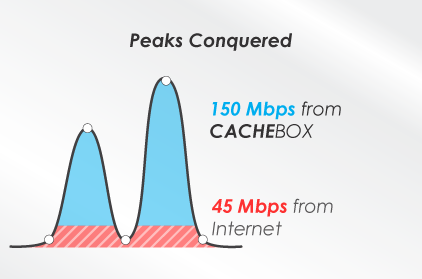
Dillingham City School District was paying over $80,000 for a 20Mbps, and with over 500 devices to support, the school needed a solution other than a bandwidth increase.
With CACHEBOX deployed, the school gets millions of dollars of capacity for less than $10,000.
The solution

Lytle Independent School District should be enjoying superfast internet access, but still found it slowing down frequently.
CACHEBOX gave the school the boost it needed and now content is delivered up to 300 times faster.
The solution
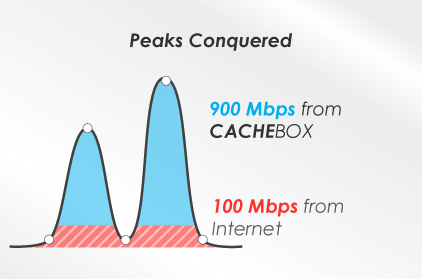
Warsaw R-IX SD in rural Missouri was struggling to manage peak-time internet demands coming from 1,500 devices connected to the network every day.
After deploying CACHEBOX, the district successfully saved money and resolved its congested bandwidth issues.
The solution
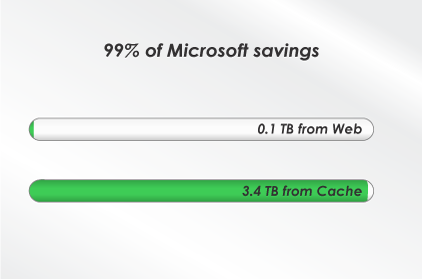
Kerrville Independent School District wanted to improve its usage of videos in e-learning, without purchasing a larger internet connection.
With CACHEBOX, the district is saving up to 96% of its bandwidth and can access software updates' content up to 8 times faster.
The solution

Merritt Island Christian School wanted to expand its 1:1 scheme and needed a solution to help prevent any ensuing congestion.
With CACHEBOX, the school is able to optimize its bandwidth to a point of consistently saving 1 to 3TB of data a month.
The solution

Louise ISD in Texas wanted to incorporate more video content into its e-learning scheme, but congestion was causing delays all day long.
The district deployed a CACHEBOX in April 2022 and has instantly seen an average of 71% of its bandwidth saved monthly.
The solution
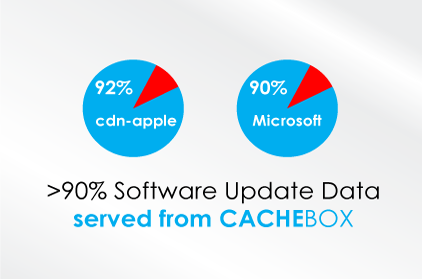
With software updates causing the most stress to its network, Greenwood 51 was looking for an appliance to help relieve their bandwidth.
In 2020 it used E-Rate funding to purchase a CACHEBOX to fulfil the district's caching needs.
The solution
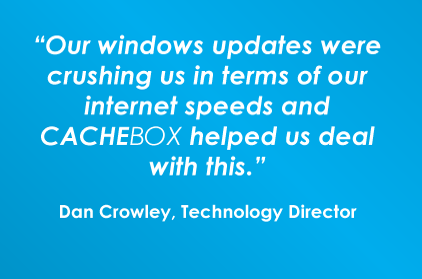
When Friends Central School deployed a BYOD scheme, the number of devices tripled overnight.
CACHEBOX dealt with the Windows updates that were crushing internet speeds, accelerating content by up to 47 times faster and delaying a further bandwidth upgrade for another 2 years.
The solution

300 devices on a 500Mbps connection means that Rutland Independent School District should be getting a congestion free internet experience. But large Windows updates were starting to eat up all of their bandwidth.
By deploying CACHEBOX, Rutland can now easily manage their bandwidth and deliver content at much faster speeds.
The solution

Chapel Hill avoided having to do a massive bandwidth upgrade by deploying a CACHEBOX in order to maximize their existing connection, despite increasing their 1:1 scheme by 600%.
The solution
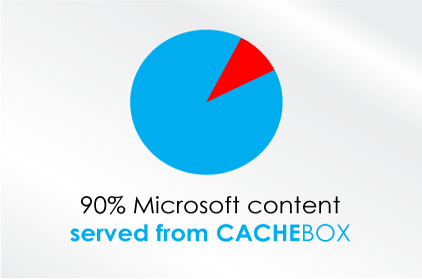
Despite a bandwidth upgrade, Troy Unified School District's students still experienced regular congestion. Large simultaneous demand for classroom content slowed the network down significantly.
With a cache picking up the strain, content is now delivered much faster than before.
The solution
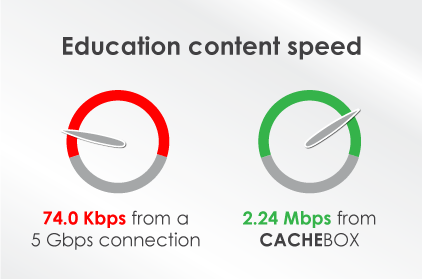
When its already costly 5Gbps connection was still not enough to support 17,000 students, Lakota Local School District searched for a solution to avoid upgrading its bandwidth capacity.
After deploying CACHEBOX, the district's network congestion had been eliminated, with classroom content being delivered at much faster speeds.
The solution
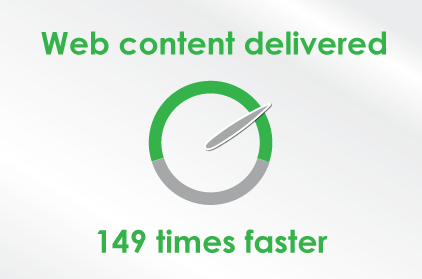
Irvington Community Schools were able to support their classroom internet usage despite having less than the recommended 1Mbps per student.
By deploying CACHEBOX, they could easily avoid congestion and receive content at faster speeds.
The solution

540 student district Mansfield Township had less than the 1Mbps per student bandwidth target for quality e-learning in classrooms.
To boost internet performance and support growing use of online content in class, it deployed a cache for reliably fast access to e-learning content.
The solution

Lindbergh Schools District was faced with the challenge of how to effectively cater to a growing number of 1:1 devices on its network.
After deploying CACHEBOX, the district saw a significant increase in user browsing experience.
The solution
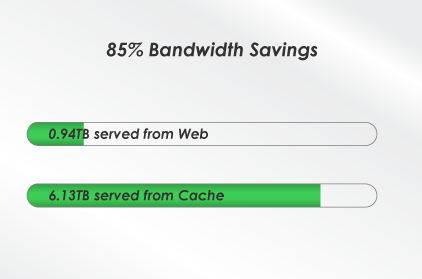
With the network at full capacity, just one viral YouTube video would bring the 15,000 student campus to a crawl.
Over the past 6 years, CACHEBOX has delivered fast speeds, slashed congestion and delayed the need for expensive bandwidth and firewall upgrades.
The solution
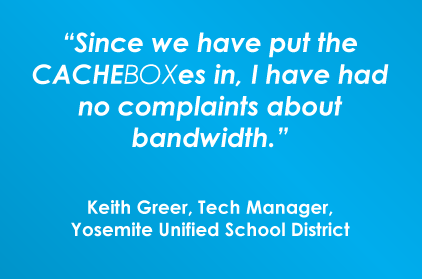
Yosemite could not afford to upgrade the overstretched bandwidth for all their rural schools - even with E-Rate funding.
For just 1% of Yosemite's annual internet cost, CACHEBOX immediately reduced bandwidth needs by 30-50% each month. The district can now plan a single, non-urgent upgrade and make a substantial financial saving.
The solution

When your internet connection costs $62 million a year, adding more bandwidth isn't the answer.
Thanks to CACHEBOX, students at Lower Kuskokwim School District's ultra-remote schools get the latest K-12 YouTube learning experience, and IT staff can support the schools remotely.
The solution

Despite lower bandwidth costs, Pearsall Independent School district couldn't increase their connection without a painfully expensive firewall upgrade.
But with CACHEBOX delivering 14Gbps of content on a 2Gbps connection, Pearsall got lightning-fast performance AND reduced the amount of traffic that the equipment needed to handle - delaying the need to upgrade.
The solution
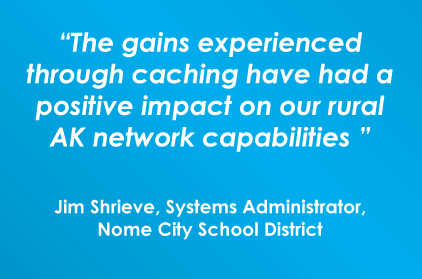
Nome City SD is a 1:1 Google district – but in remote Alaska, their expensive 75Mbps fiber connection was far from sufficient for adaptive learning platforms.
By deploying CACHEBOX, Nome City freed up bandwidth for Google Classroom, streaming and online collaboration platforms – and problems with insufficient bandwidth have vanished.
The solution

Chris Rule Director of Information Services at Sublette County has long recognized the benefit of caching, so much so he used to custom-build his own.
But hands-on DIY experience had meant wasted labor and stress getting it to perform with school content. With a dedicated CACHEBOX, his time is his own and schools' performance is guaranteed.
The solution

Greenwood School District 52 wanted to deploy Chromebooks in a 1:1 scheme, so it more than doubled its bandwidth. However, the district still experienced congestion.
With caching, Greenwood was able to offload 75%+ of Chromebook updates during the 1:1 rollout, without the need for more bandwidth.
The solution
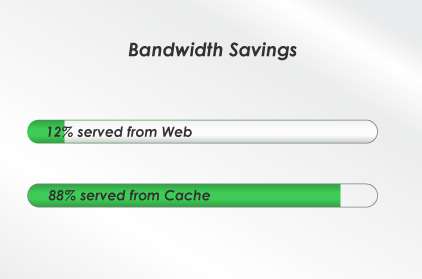
Newcastle's tech team chose the #1 federally-funded caching appliance in order to offload more classroom content than alternatives. Serving an average of 88% of demand locally, CACHEBOX is keeping connectivity fast and free every month.
The solution

Fremont RE-2 school district in Colorado replaced an ineffective Apple Cache and offloaded so much 1:1 traffic, students gained a premium digital learning experience in the classroom without additional bandwidth.
The solution

Plato R-V in rural Missouri won the network battle with large game downloads for esports.
With caching offloading up to 72% of gaming updates, the district benefits from a premium user experience.
The solution
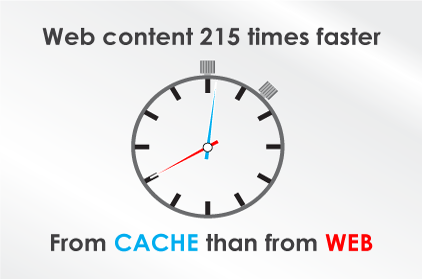
Moses Lake wanted to roll out its successful 1:1 pilot but needing to upgrade bandwidth at 15 schools was making it financially impossible.
With caching offloading 80%+ of demand, each school was able to launch e-learning more affordably, without paying higher monthly fees.
The solution

With plans of expanding 1:1 and BYOD across its 3 schools, Hamilton needed a reliable caching solution to eliminate congestion and guarantee access to e-learning in class.
By serving the majority of traffic locally, Hamilton's teachers and students access all the educational content they need, free from congestion.
The solution

Despite disappointing experience with old caching technology in the past, Muscatine has come to rely on CACHEBOX to alleviate congestion regardless of its ever-evolving 1:1 learning platforms.
The solution
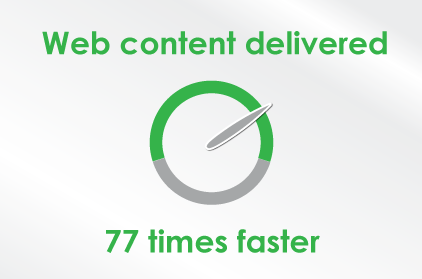
Despite having upgraded bandwidth capacity significantly, Tallassee City's teachers reported slow web speeds in the classroom.
Content fetched from particularly slow servers upstream can't be accelerated – even with unlimited capacity. By serving content locally from CACHEBOX, that same content is 50, 60, even 77 times faster!
The solution
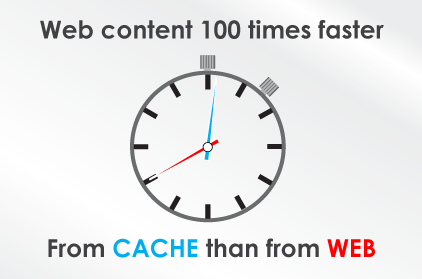
Warren County's Network Administrator didn't really know if caching would make a difference, but with E-Rate funding the tech, he thought it might be worth considering.
Now he's very glad he did. Learning content now arrives hundreds of times faster.
The solution
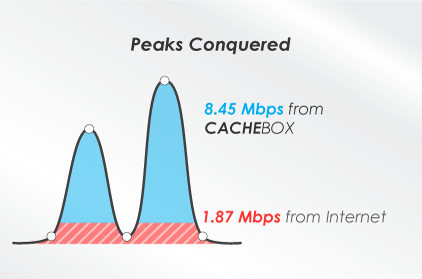
St Joseph couldn't afford the upgrade costs and extra kit needed to deliver more bandwidth. CACHEBOX helped the school boost capacity – using the existing infrastructure – in a cost-effective way.
With 89% of the school's content served from cache, demand on the connection was slashed to 11%.
The solution
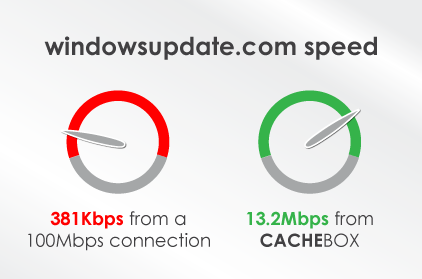
Even with 625Kbps of bandwidth per student, Pretty Eagle's staff and students experienced slow web content.
As a private rural school without state or federal grants, buying more bandwidth was not an option.
The solution

With network congestion a daily occurrence in its remote Alaskan schools but bandwidth simply too expensive, Fairbanks's Networking Director needed an alternative solution.
Hoping modern caching wasn't the same tech he had struggled with years before, the district turned to CACHEBOX.
The solution
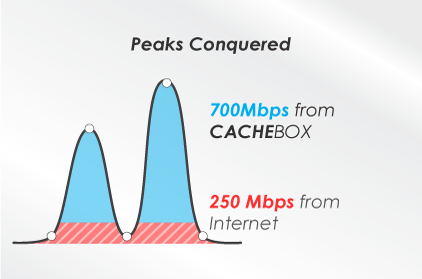
On a recommendation from a neighbouring school, Orchard Farm chose CACHEBOX instead of a bandwidth upgrade to alleviate congestion.
As bandwidth costs have dropped over the years, the district has secured more for the same price, but CACHEBOX has outperformed it, delivering vital boosts to meet spikes in demand.
The solution

Huge volumes of software update demand at rural district Dexter frequently jammed the network, causing slow speeds and a poor e-learning experience for its 800+ students.
With classroom lessons at risk, Dexter turned to caching to better offload demand and free up access to e-learning content.
The solution
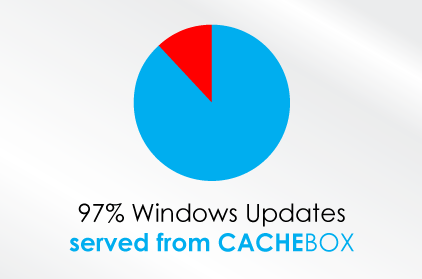
Despite a bandwidth upgrade, Merrimack Valley's students couldn't access online content on their new 1:1 devices quickly enough. Large spikes in simultaneous demand were causing congestion.
But with caching meeting that same demand locally, the spikes are gone.
The solution
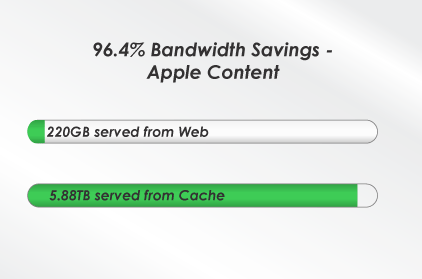
As full 'apple' teaching environments, String Theory schools expected to be leading the way in digital learning best practice, however it faced too much non-learning content. With internet capacity saturated and Apple Caching not making much of a difference, classrooms were facing severe slowdowns.
Needing a smarter, more powerful, all-encompassing cache – it turned to CACHEBOX.
The solution
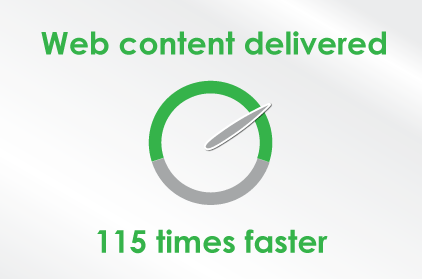
Sand Ridge and Sweet Home Charter Schools in rural Oregon both struggled with reliable connectivity during state testing periods. Congestion from spikes in traffic would bring everything to a halt at both schools.
With learning outcomes at risk, the schools' tech manager applied for E-Rate funding for a caching solution – happily he got a lot more than expected with CACHEBOX.
The solution
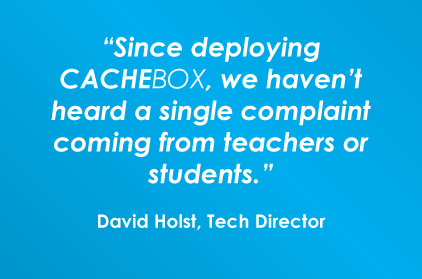
For suburban Strafford School District R6, a narrow 375Mbps connection shared between 1,200 devices meant heavy network congestion.
With hundreds of devices requesting bandwidth-hungry software updates, the district deployed CACHEBOX to cache heavy files and serve them locally.
The solution
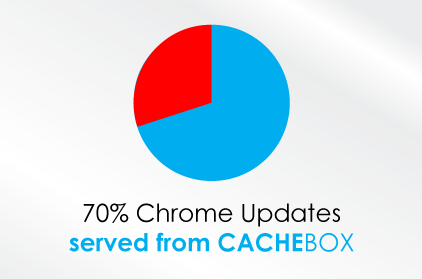
With SEED's 350 user devices demanding different software updates throughout the day, congestion was curbing lessons, videos were buffering, and online resources were not loading.
With CACHEBOX offloading updates and serving them locally, more bandwidth is made available for video and other online resources.
The solution

With congestion slowing down access to video and learning content in the classroom and PARCC testing at risk of disruption, Worth SD looked to E-Rate caching for help.
But instead of Apple Caching, it chose to benefit from the all-encompassing caching power of CACHEBOX. Offloading classroom content from all sources and platforms, as well as software updates for all of its devices, secured significantly higher ROI.
The solution
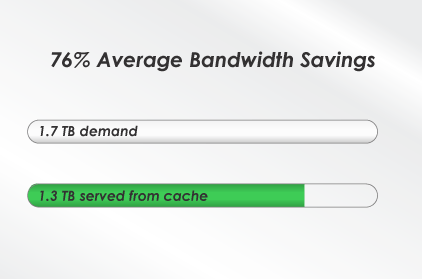
Rolling out 1:1 was headache enough - but ensuring concurrent user access wouldn't impede its evolving e-learning schemes meant Galax City needed an easy to use solution beyond simply adding capacity.
The solution

For suburban Riverside Unified School District, even a 1Gbps connection shared between 800 devices meant repeated network congestion and slow speeds in class.
With hundreds of devices requesting bandwidth-hungry software updates, the district deployed CACHEBOX to cache heavy files and serve them locally.
The solution
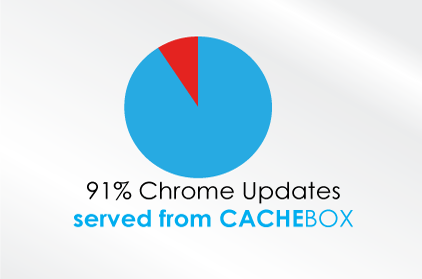
Urban district Lakewood City had no problem getting high speed internet, but its portion of shared access was getting congested.
With thousands of devices demanding updates it was proving too much for its internet allocation, but the district tied to a contract until 2020, it needed another way free up access in the classroom.
The solution

Windber had high ‘per student' capacity - in line with FCC targets - but its network would still frequently grind to a halt.
With software updates from its increasing number of 1:1 devices clogging up bandwidth – it turned to a solution it's Tech Director knew well, having used it at a neighboring Pennsylvania district.
The solution
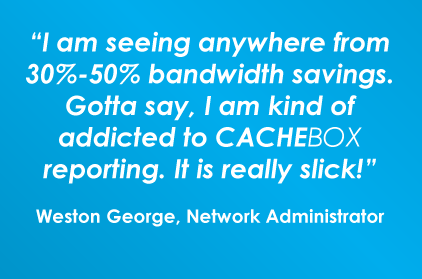
Monett's DIY caching setup was labor-intensive and cached only limited content. As demand evolved to include software updates, video and complex content – it was being left behind.
A specialized appliance for schools, CACHEBOX requires minimal effort for unbeatable results, caching everything a school needs.
The solution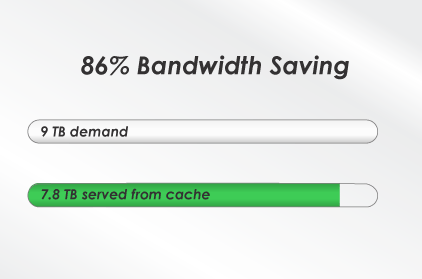
With 6,000 devices in use, Bozeman's bandwidth was being squeezed. But not, as it expected, by too much demand for learning content.
With classroom access to online learning slowing, Bozeman applied for E-Rate-funded caching. But only in deploying CACHEBOX and slashing total demand by 86% – did it uncover software updates as the culprit.
The solution

With over 9,000 devices downloading bandwidth-hungry software updates and media-rich content, Vernon Parish experienced a dramatic slowdown in web access and poor user experience.
The district eliminated congestion by investing in a caching solution that handled the majority of traffic demand – up to 90% monthly.
The solution
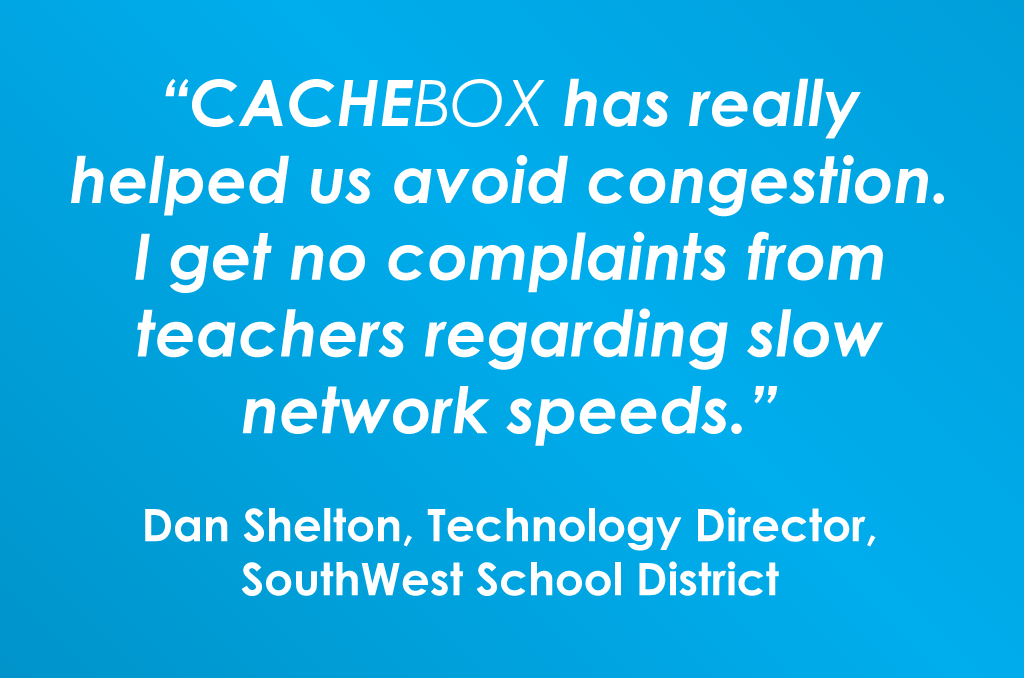
A consortia-led allocation of 80Mbps for Southwest meant limited access to media-rich digital learning content for almost 900 connected students.
With high demand and long delays becoming a daily struggle, the district turned to a caching solution to deliver the capacity boost needed.
The solution
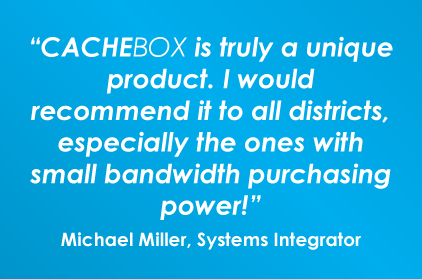
With huge system updates from Apple, Microsoft and Windows regularly congesting the network, Washington Township's large investment in 1:1 was at risk of abandonment.
Now, CACHEBOX serves as much as 74% of total network traffic directly from cache, taking the load off the network and accelerating requests directly from the district's LAN.
The solution

St Ambrose needed fast and reliable access to the internet and online testing, on just 400Mbps of copper connection.
CACHEBOX helped St Ambrose maximize their existing bandwidth use, so they could eliminate congestions and dramatically increased the speed of educational content delivery on the network.
The solution

Tied to a consortia for a small share of a larger bandwidth purchase to keep costs low, Guy-Perkins' drive towards 1:1 meant significant traffic growth beyond its allocation.
As caching would deliver the cost-effective capacity boost needed, it chose the #1 E-Rate funded solution, CACHEBOX.
The solution
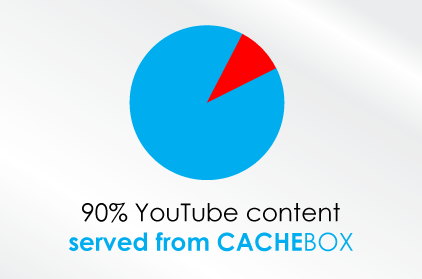
How does a rural school district with expensive bandwidth and over 5,000 students meet its growing demand for video content? By serving 90% of all Google Video and YouTube requests from CACHEBOX.
The solution

Edison's 100Mbps connection was proving to be insufficient. But at $4000 per month, the district sought a better value solution to its connectivity problem.
Caching has offloaded a huge proportion of the districts traffic, giving teachers and students the speed they need in class.
The solution
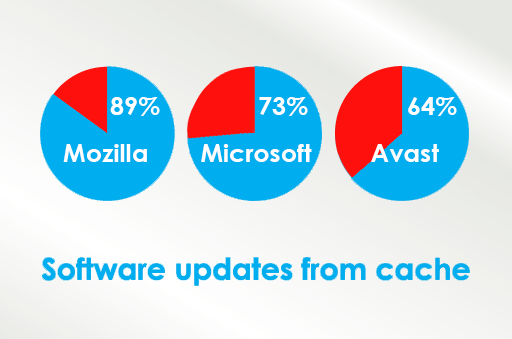
Queen of the Rosary, a private school in Illinois, often suffered from slow web access whenever software updates occurred - overwhelming its connection, despite having just 138 users.
Needing to avoid paying out for more costly capacity while it more than doubled its 1:1 devices, it chose CACHEBOX to deliver the extra capacity needed at considerably less cost.
The solution
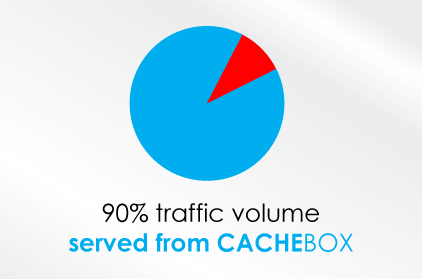
As Hampton-Dumont ramped-up web-based learning in the classroom, it knew sustaining adequate access to content was vital.
At the time, the FCC was recommending 5 times its existing capacity – but that was way beyond the district's reach. It needed a better-fit solution.
The solution
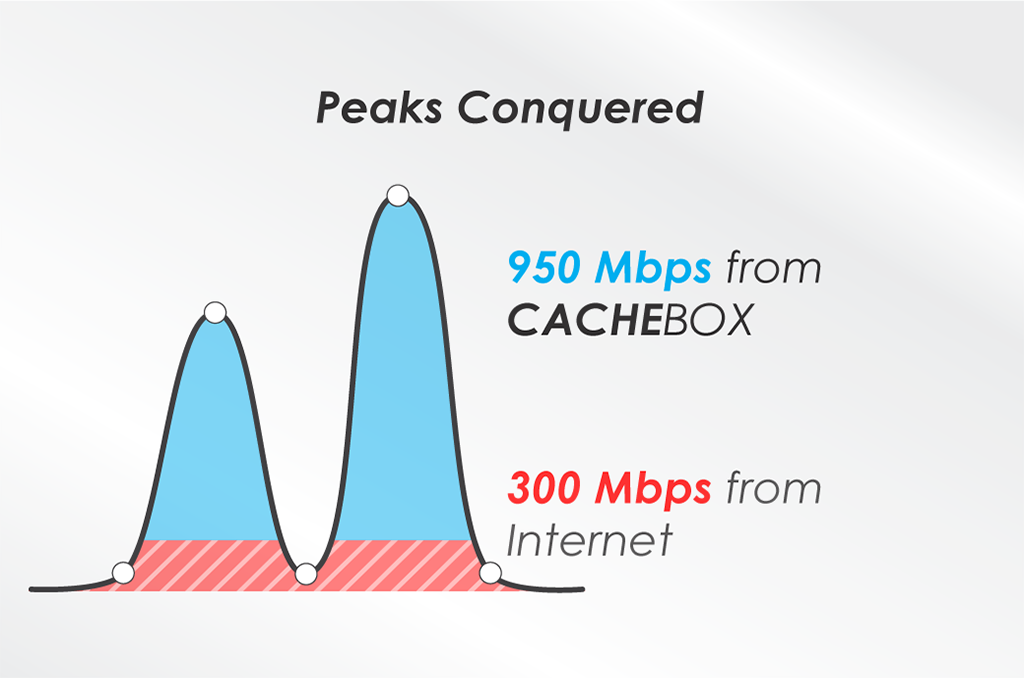
Esko planned to go live with 1,200 new devices over summer. But with a network already often saturated – the 5 times leap in web users risked disaster.
With CACHEBOX boosting capacity by more than 3 times, the transition to 1:1 learning went without a hitch.
The solution
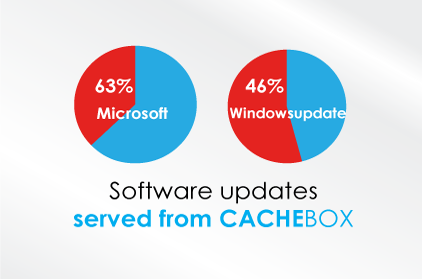
With plans to distribute more student devices, Brookfield knew its existing internet connection was not up to speed.
Their computer lab was already quite slow, even when just half full, so they deployed a CACHEBOX210 to maximise bandwidth and accelerate their internet speed.
The solution
